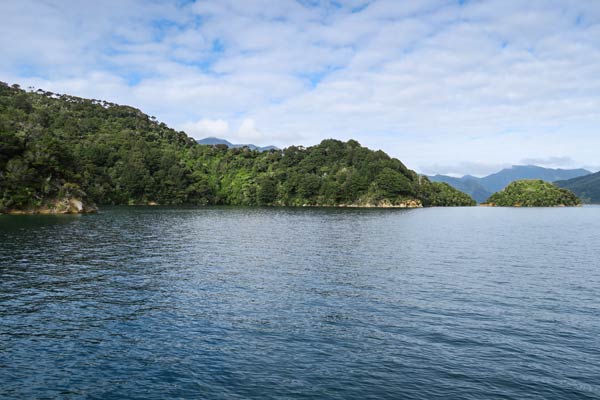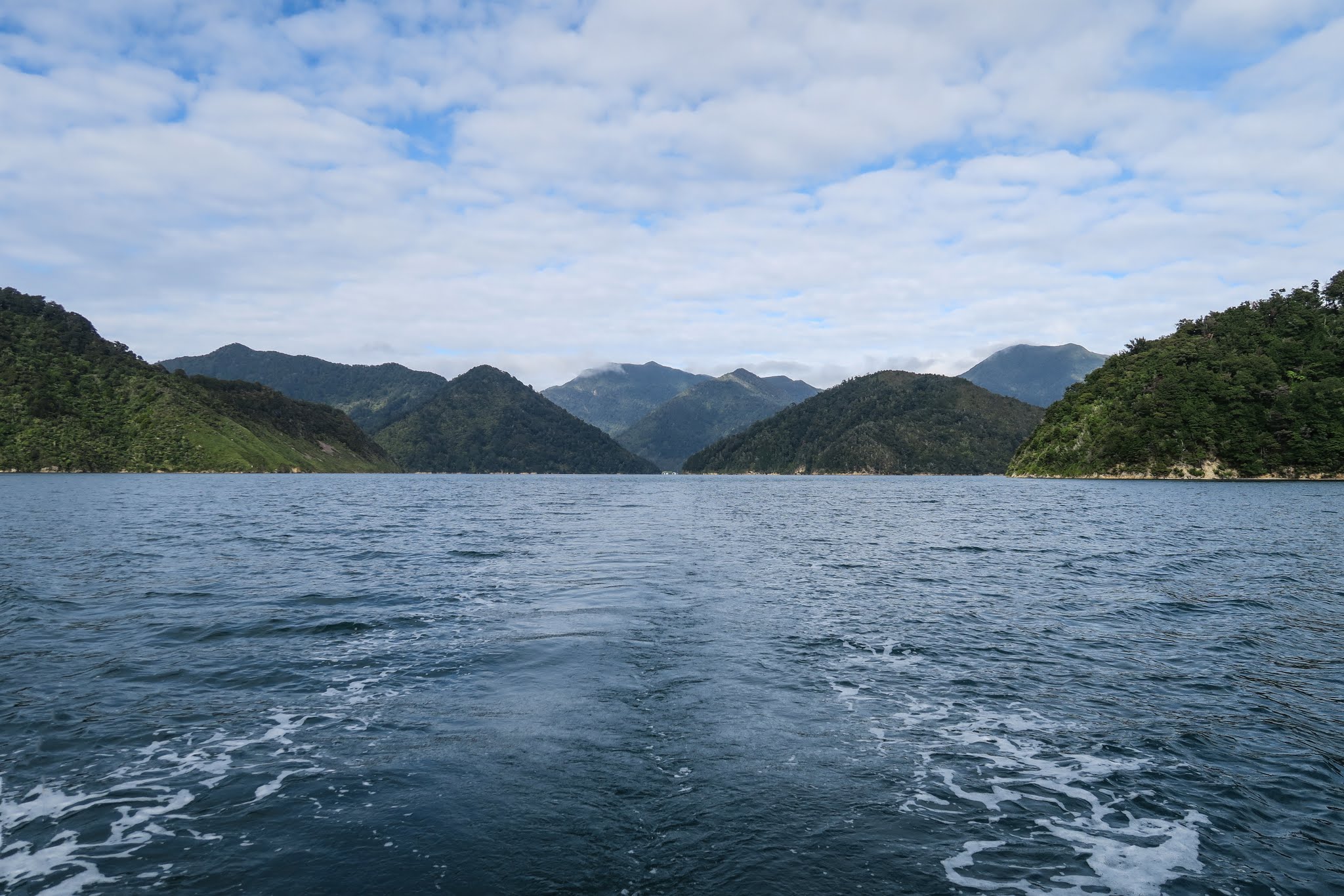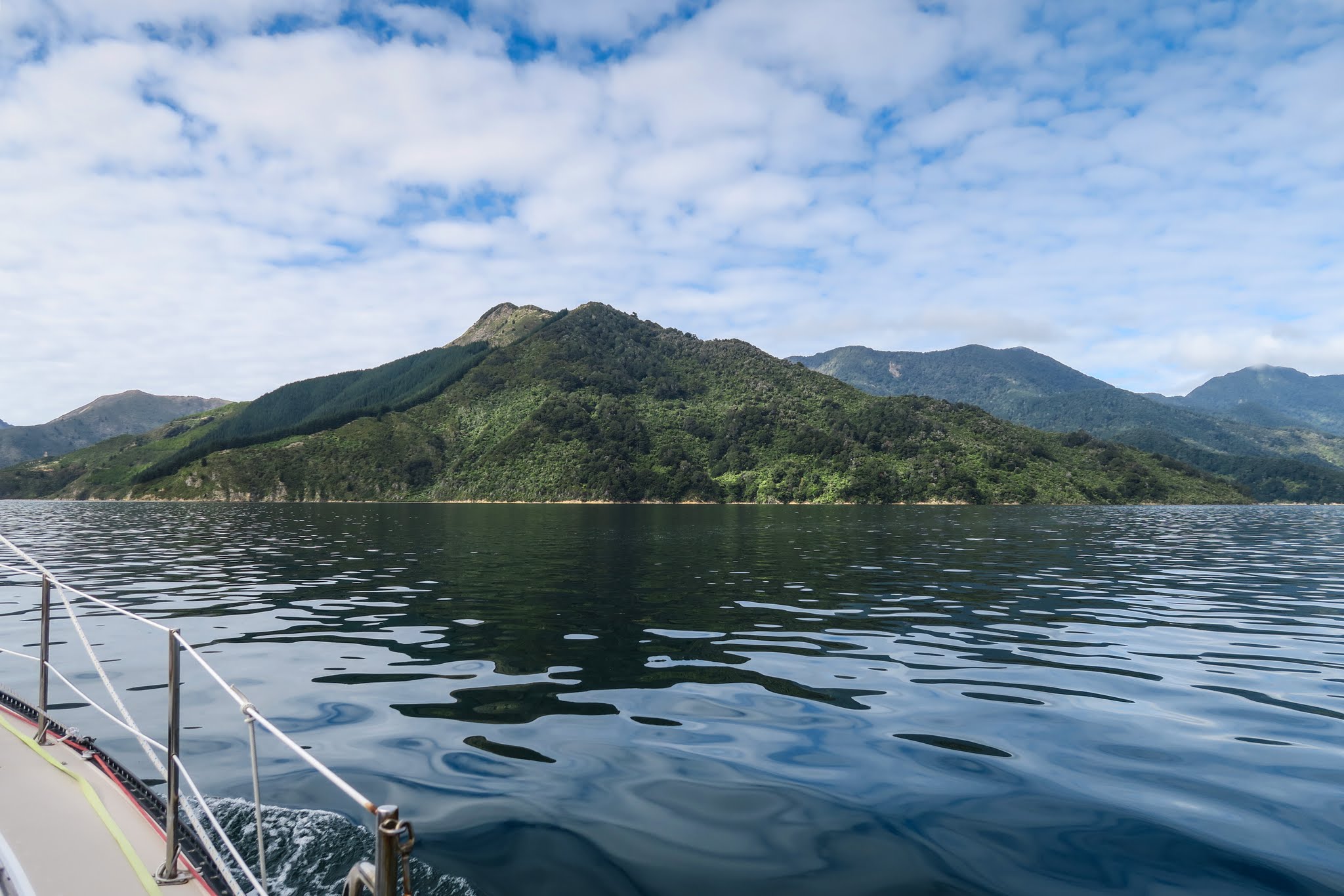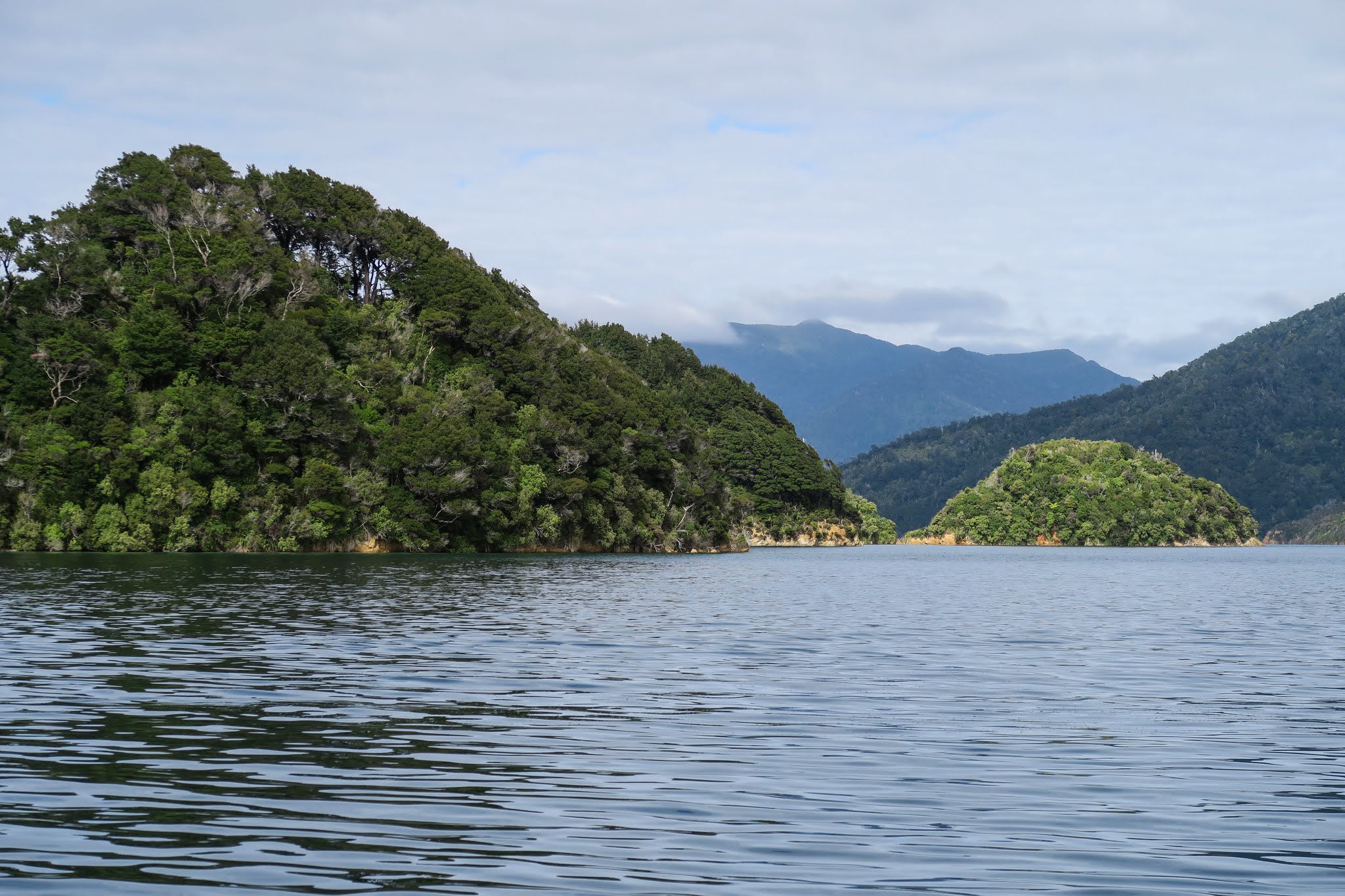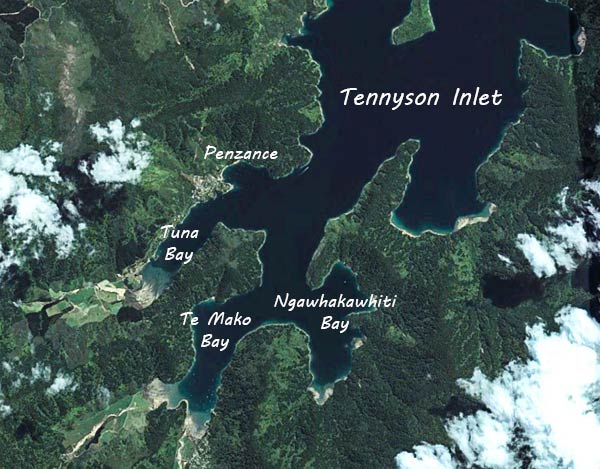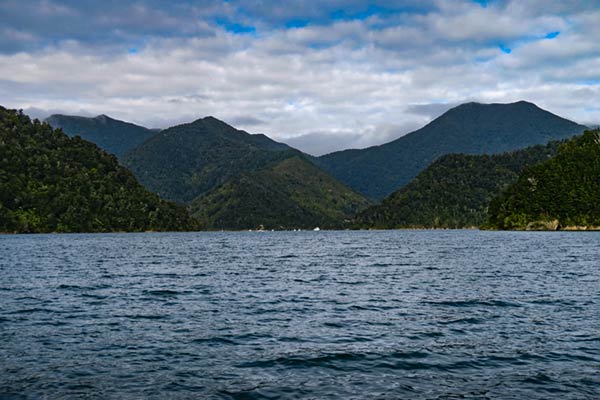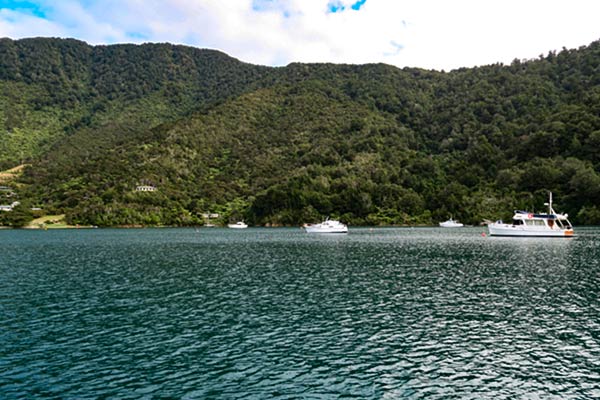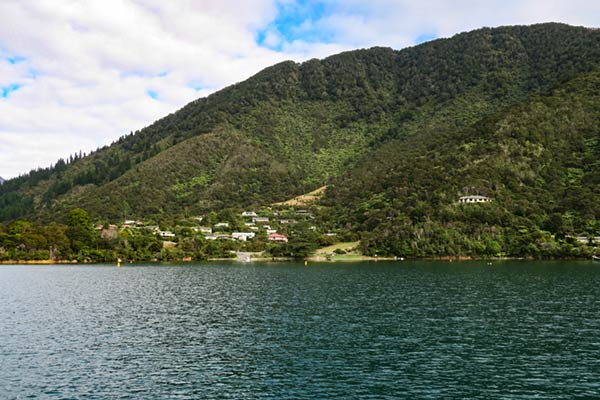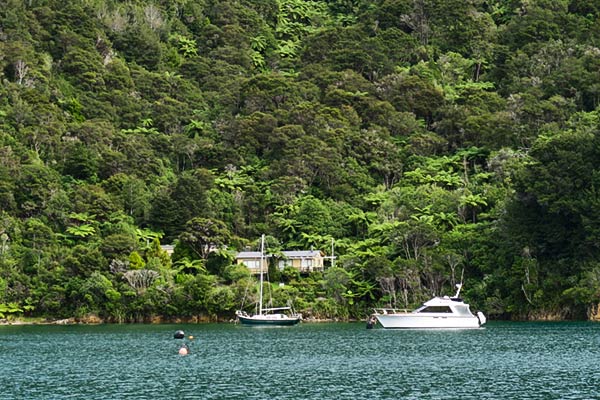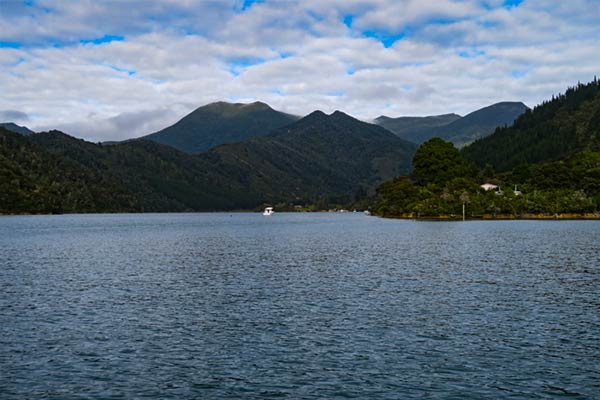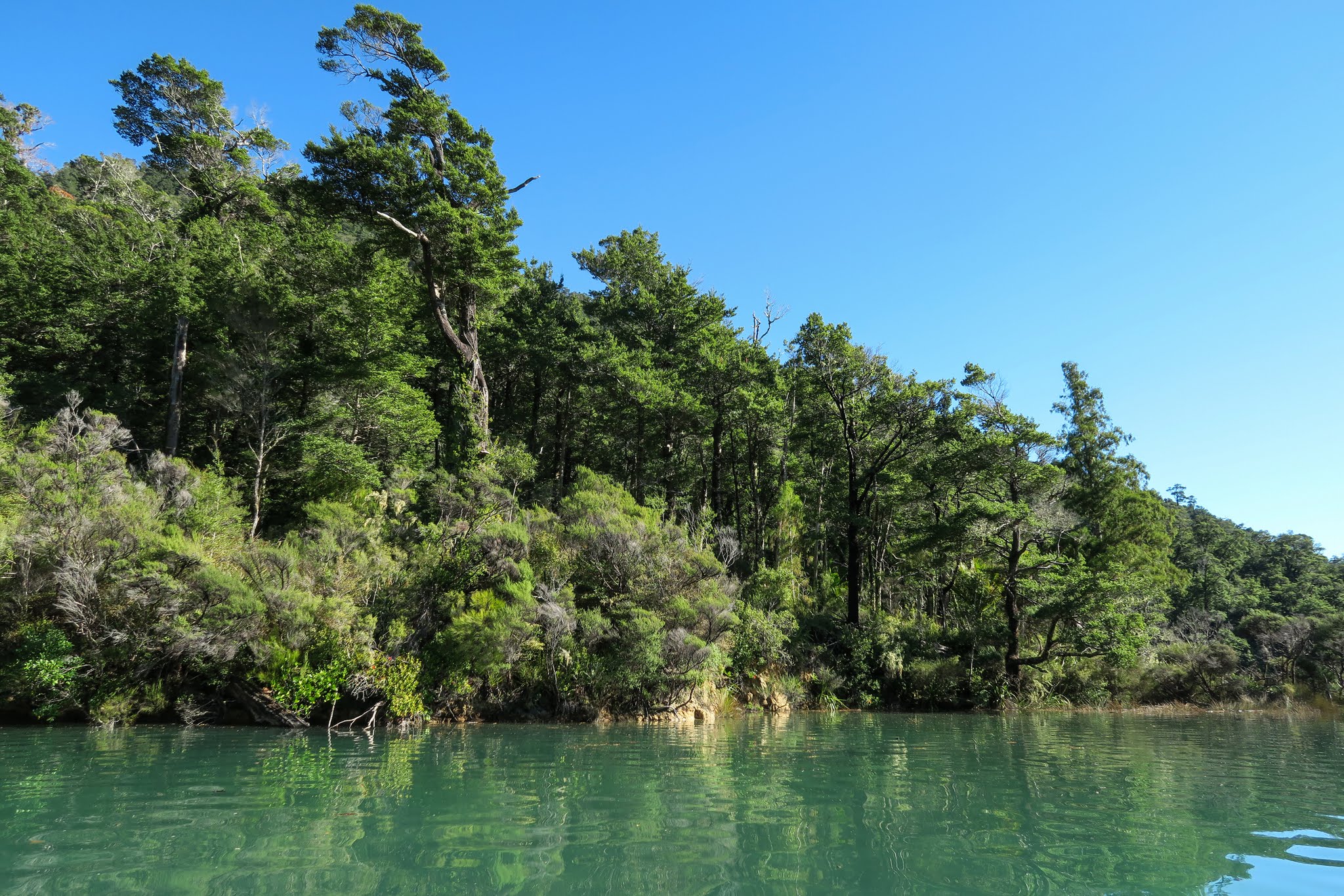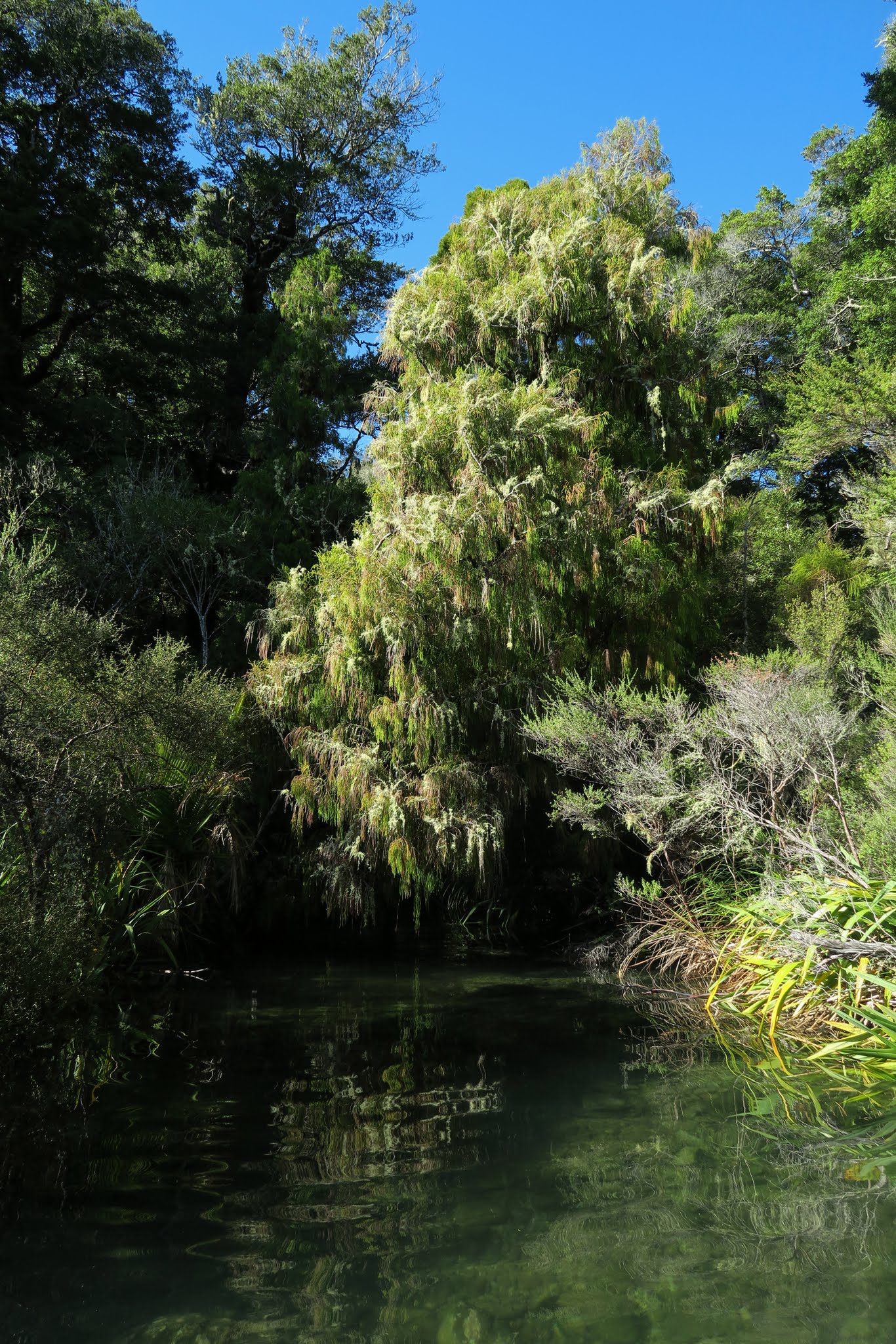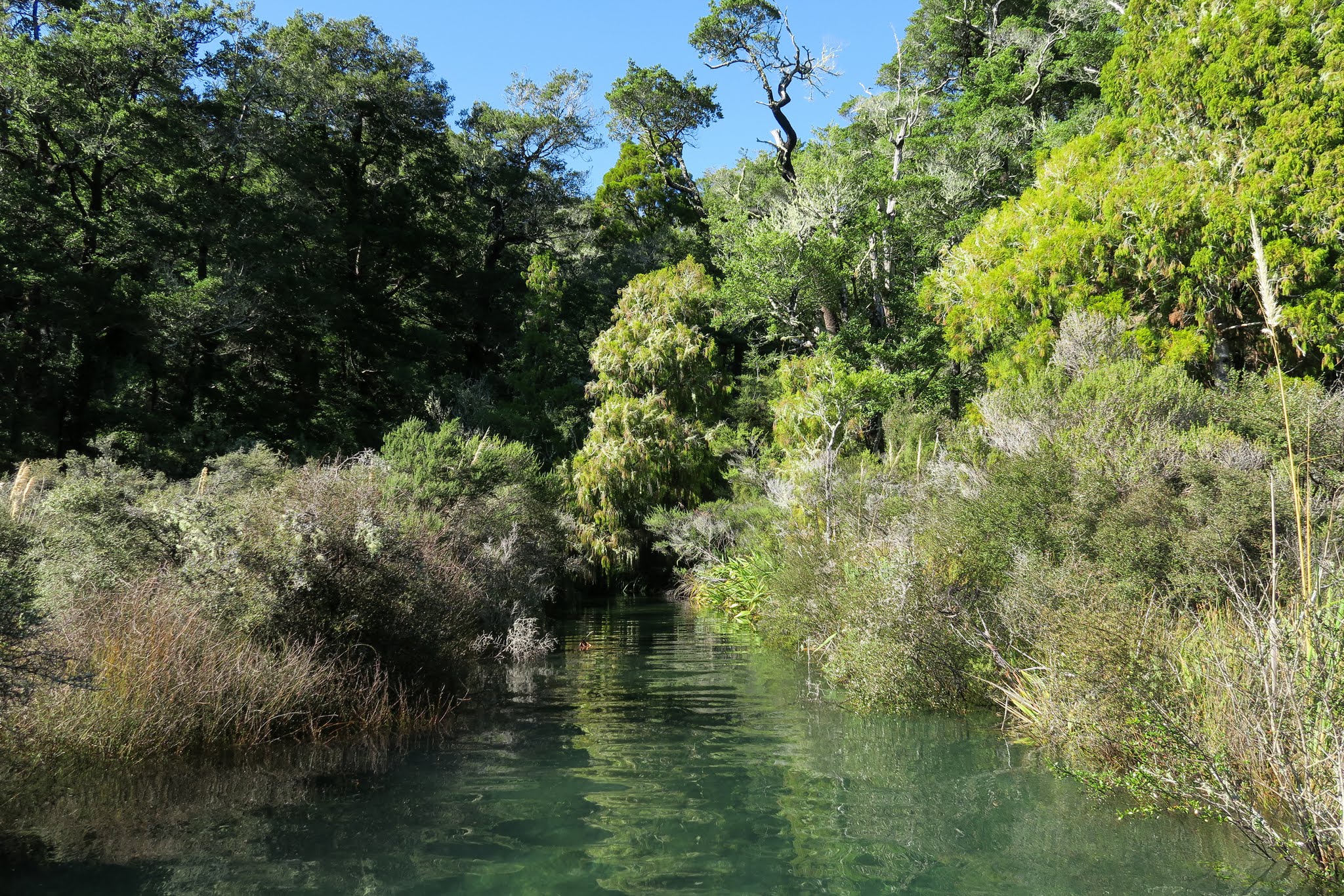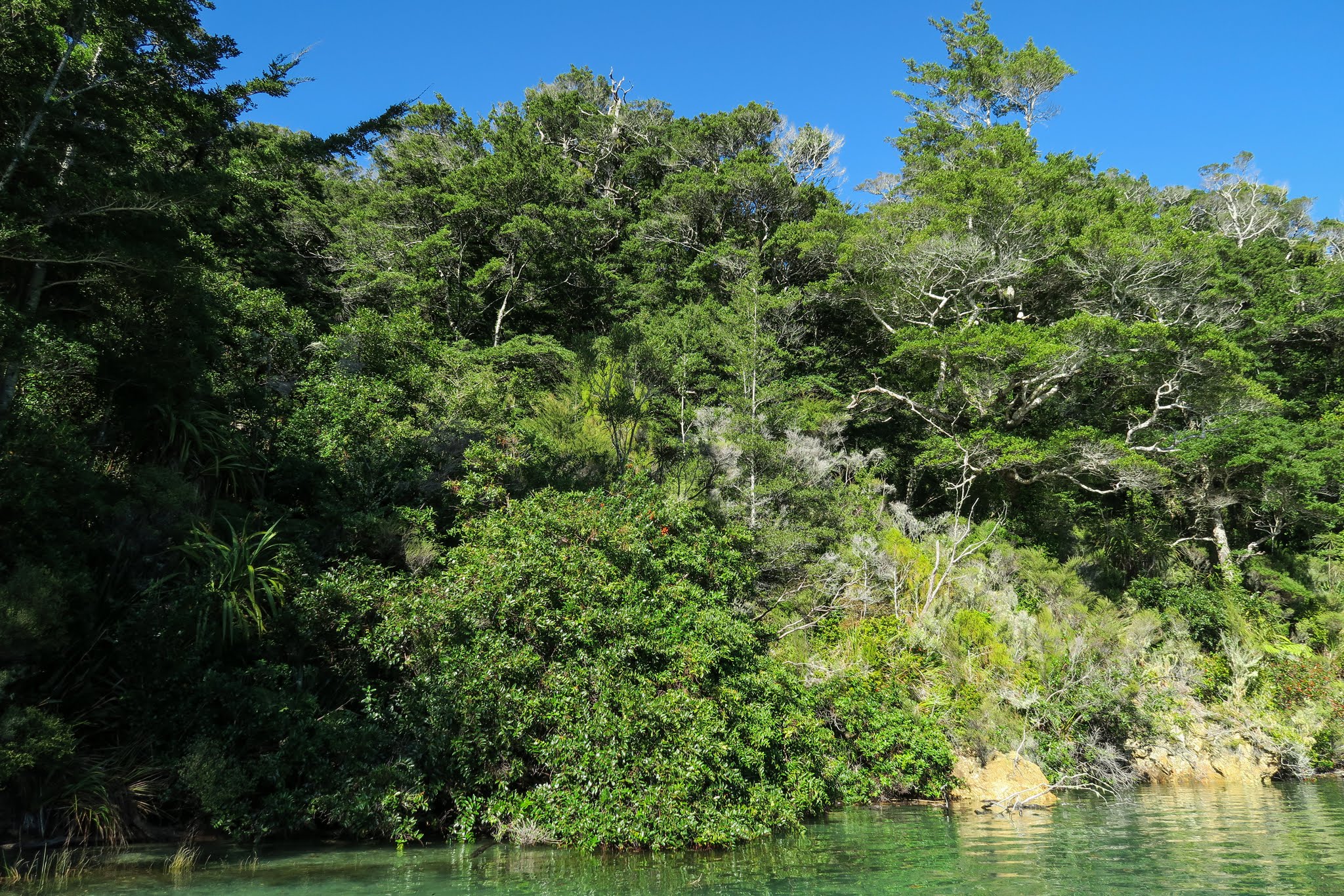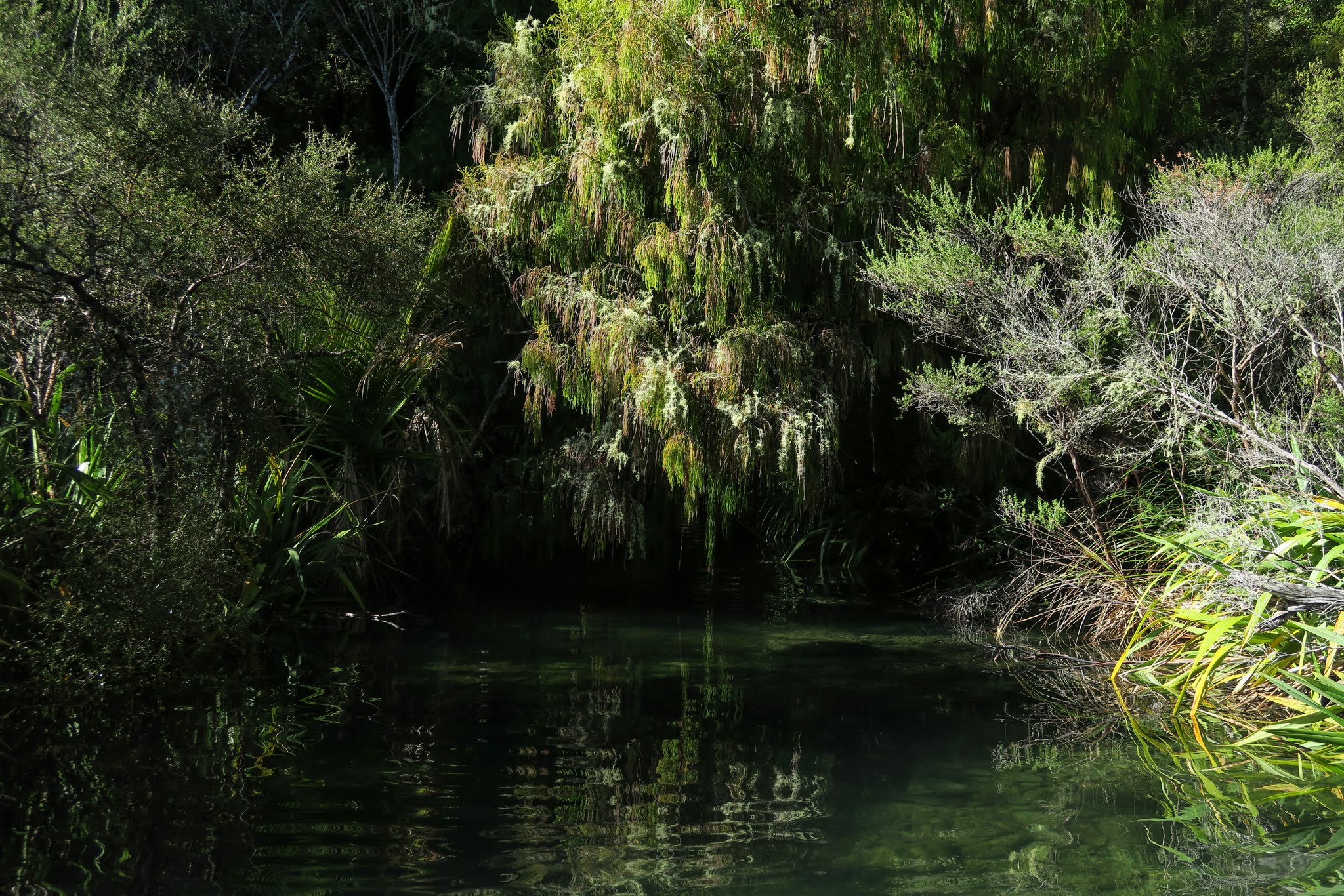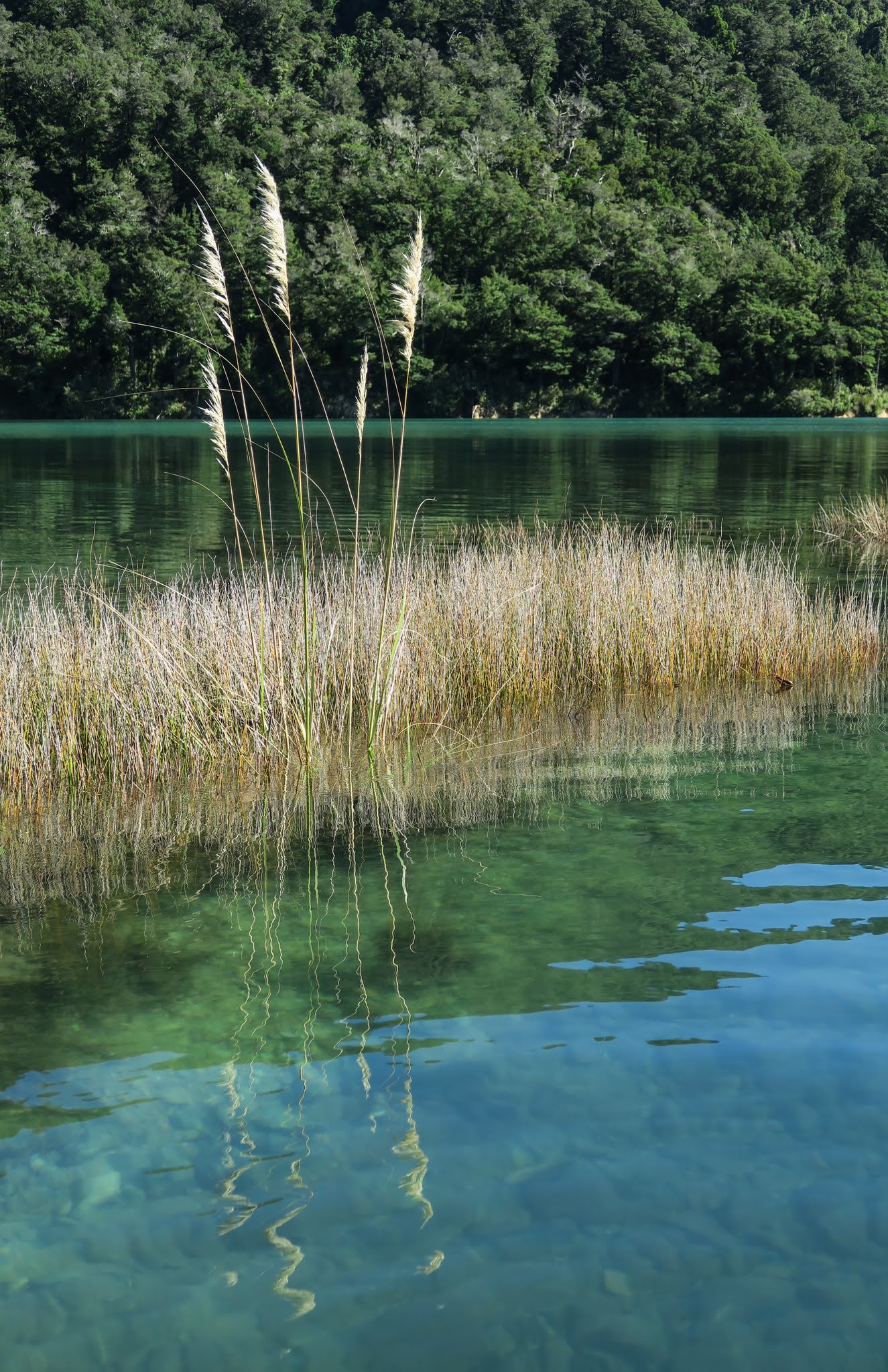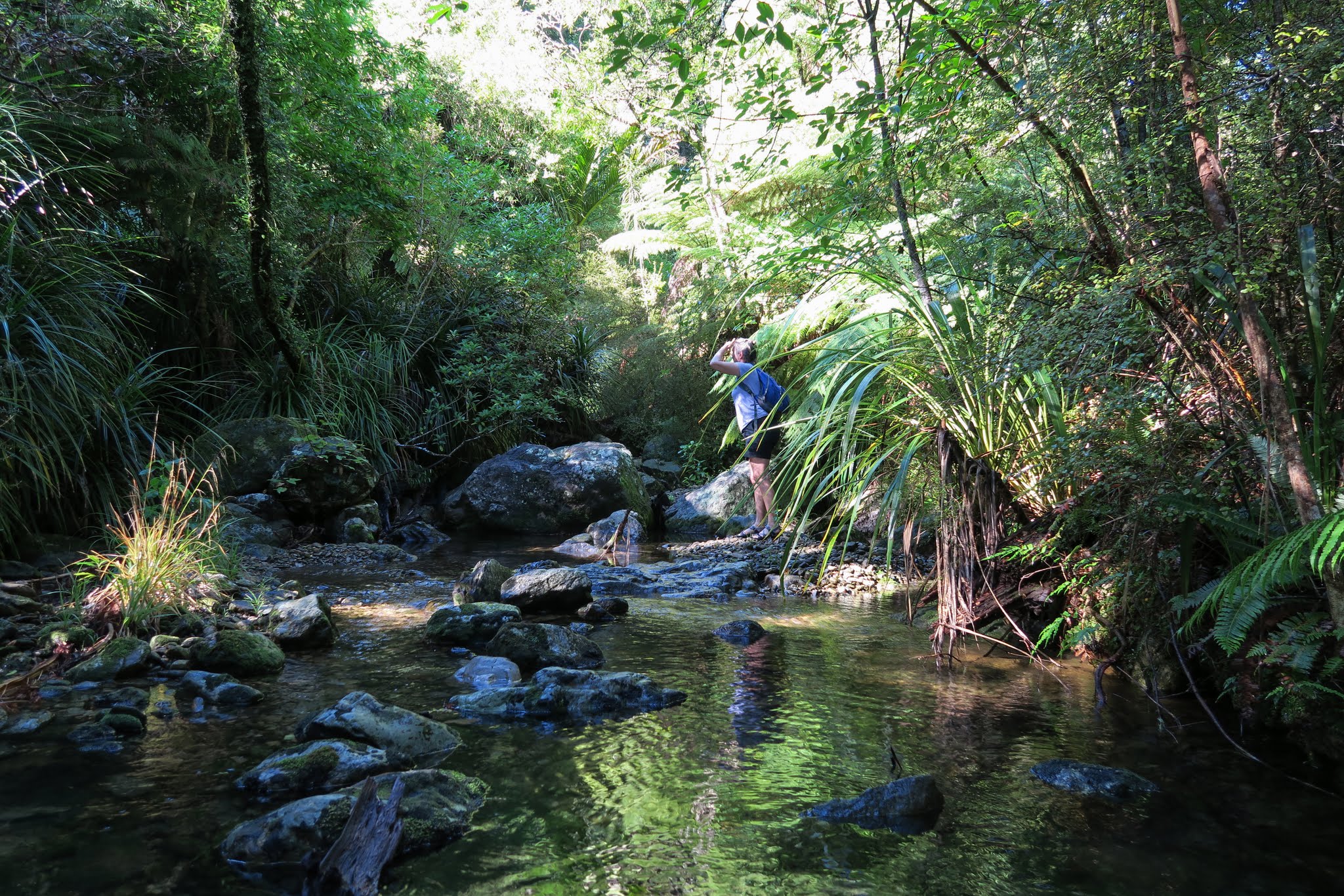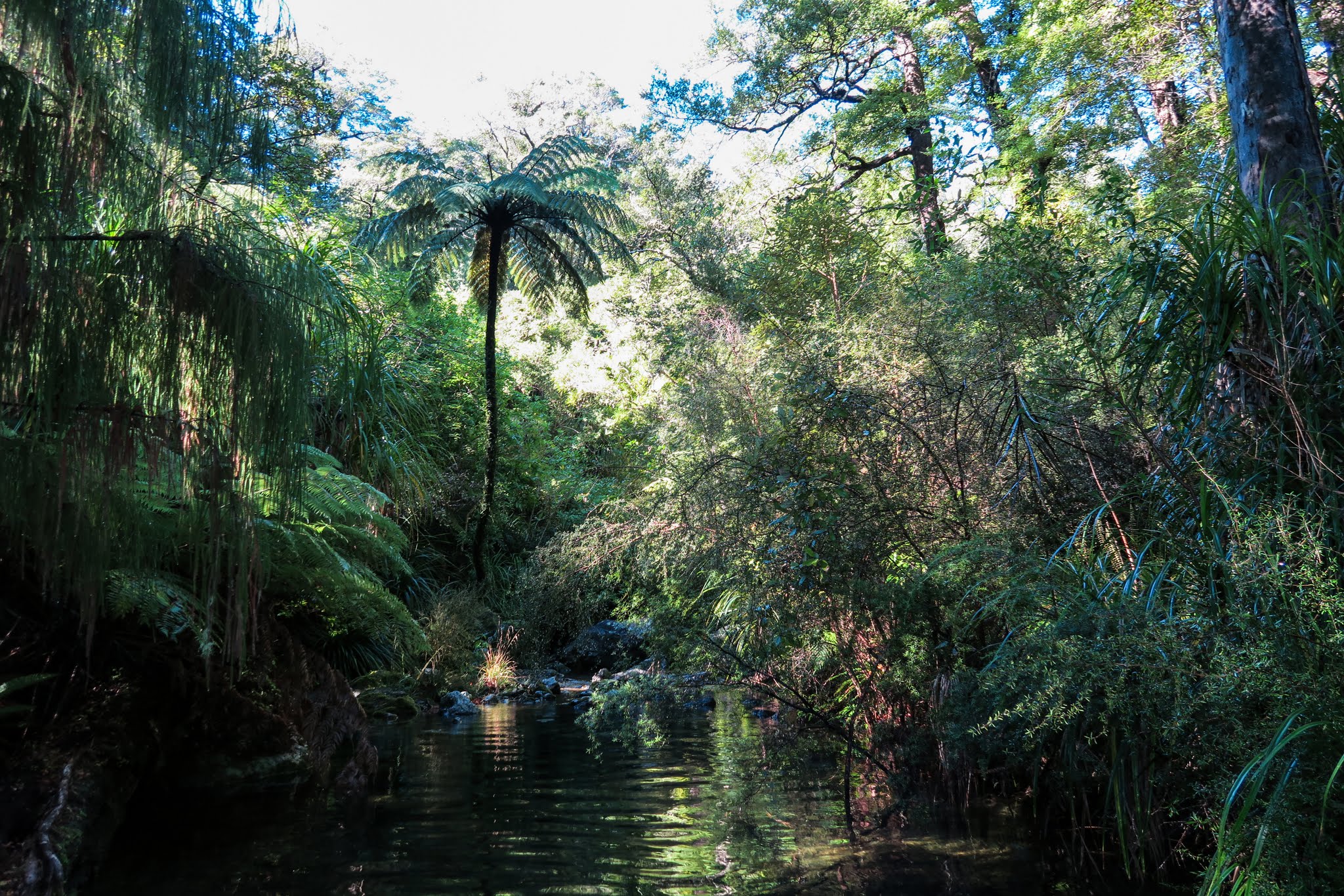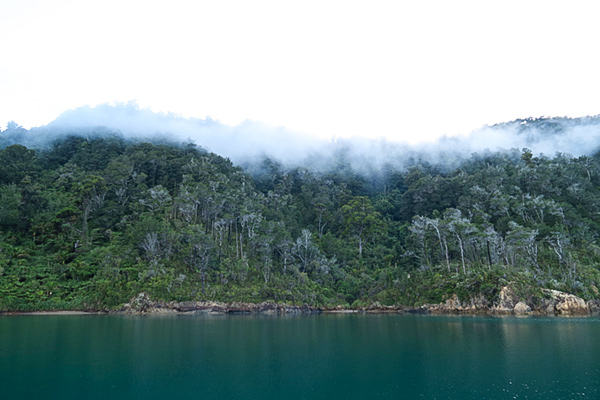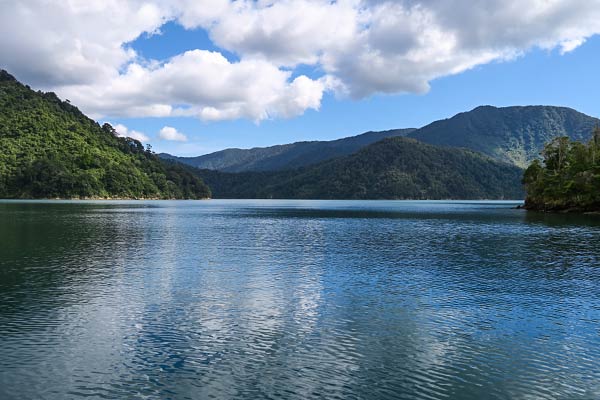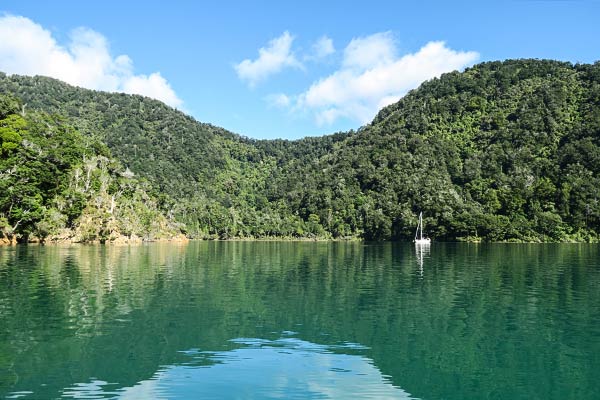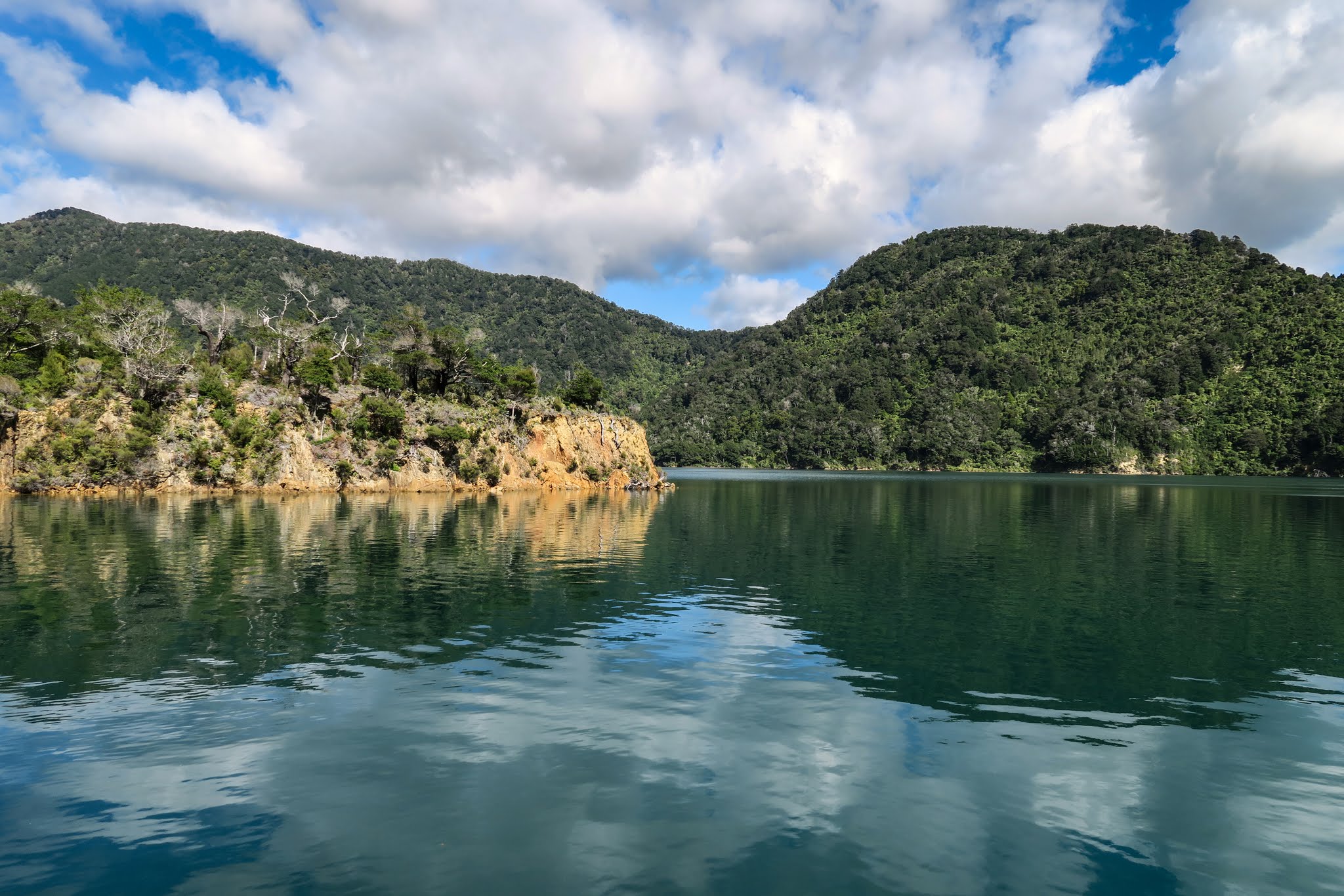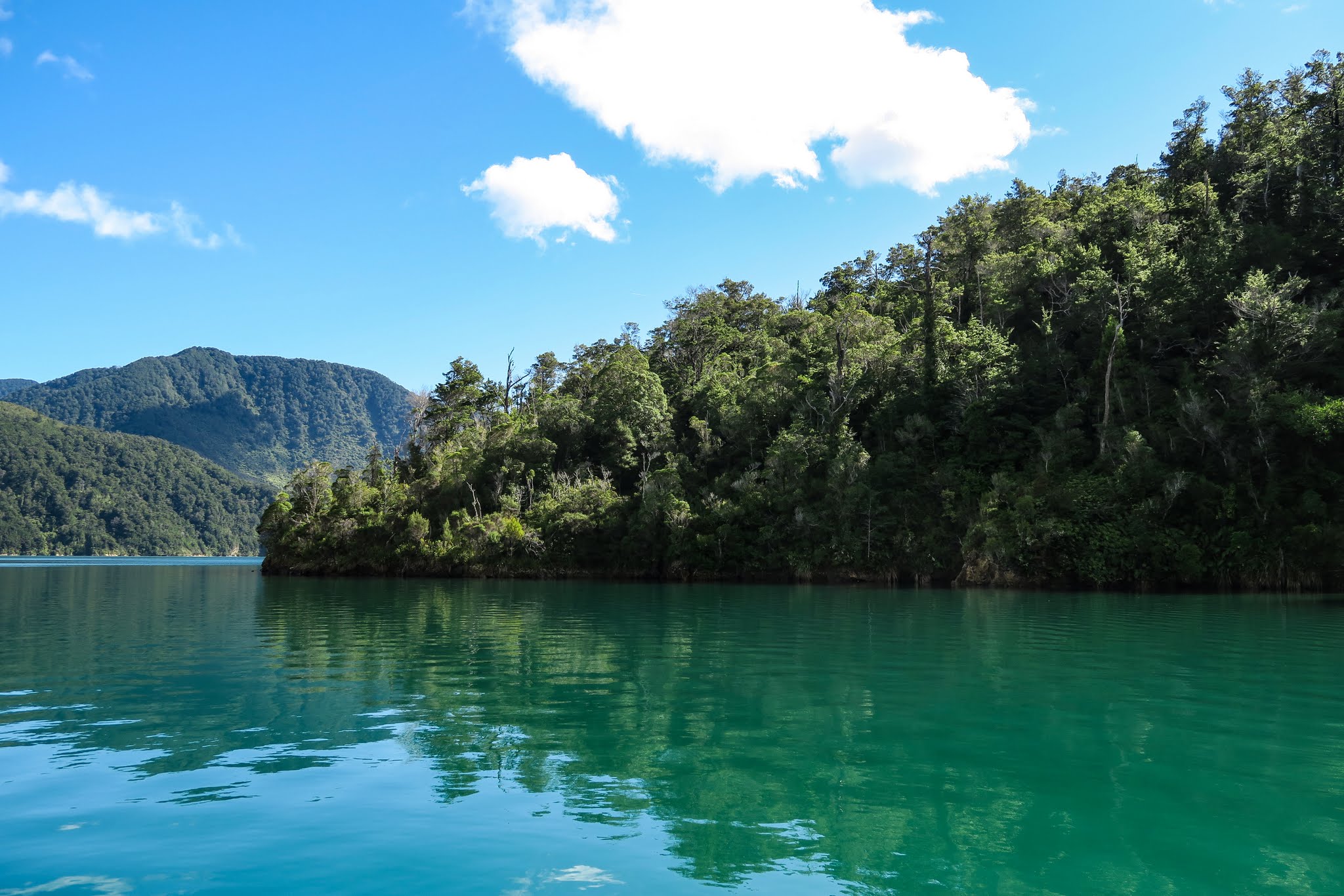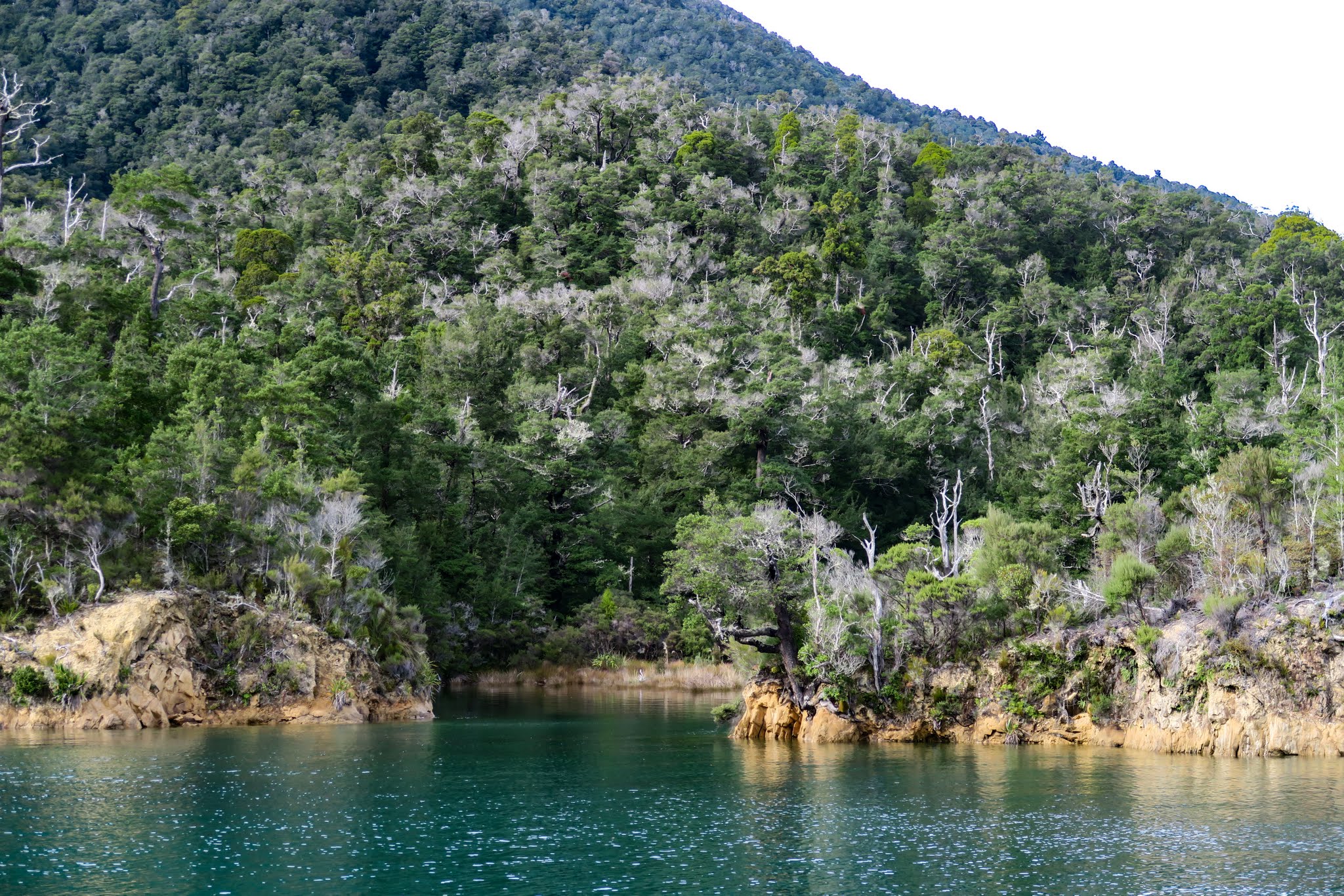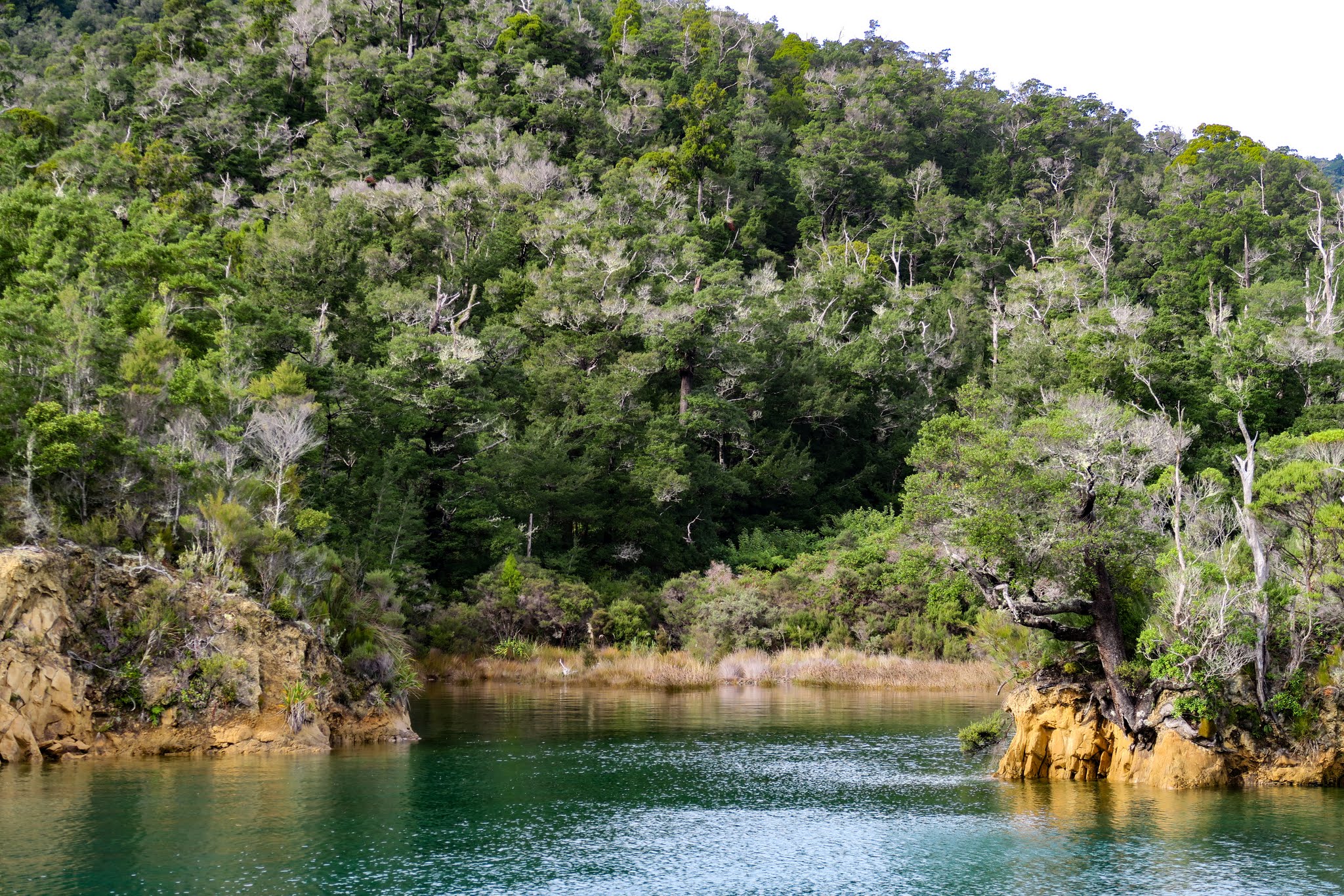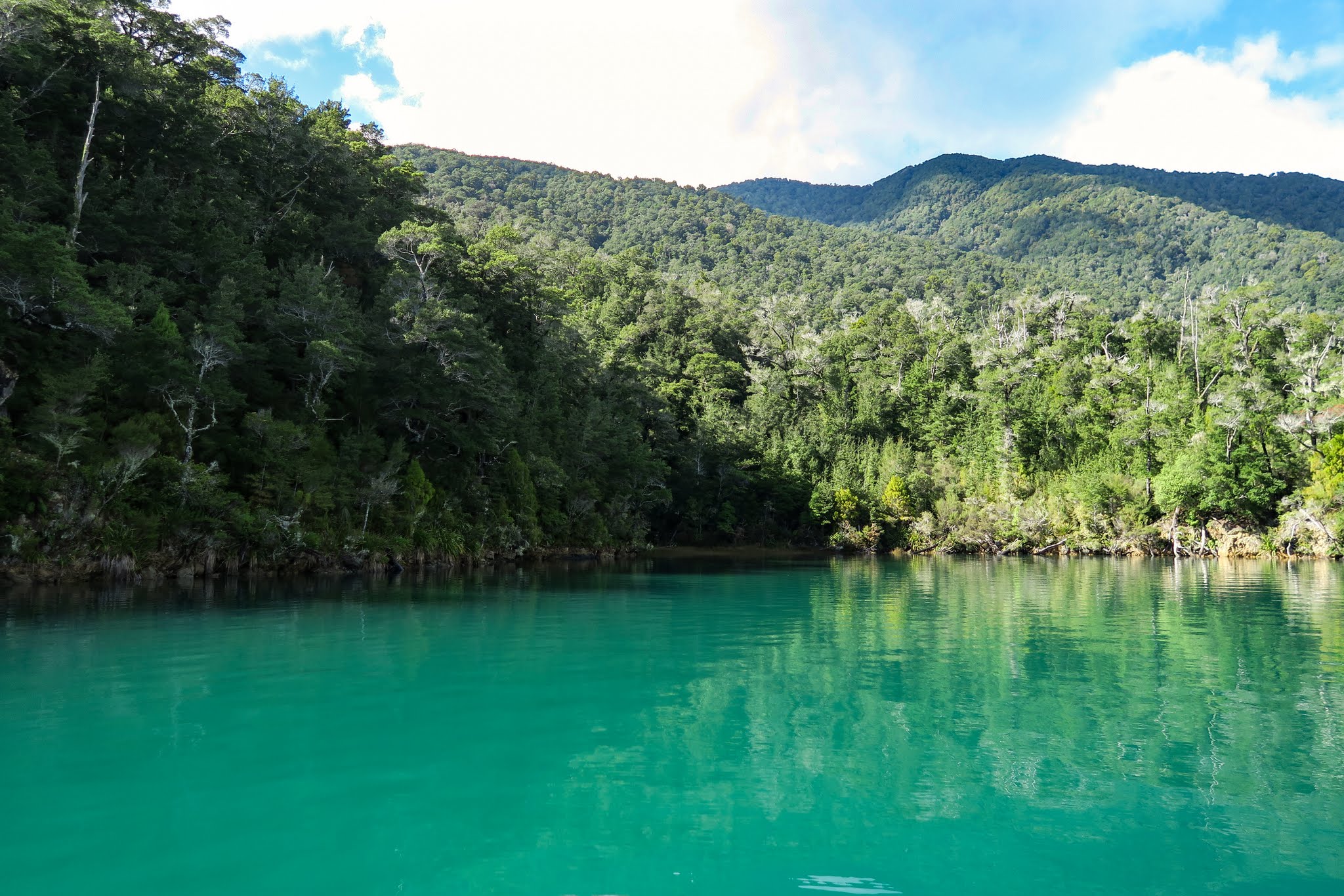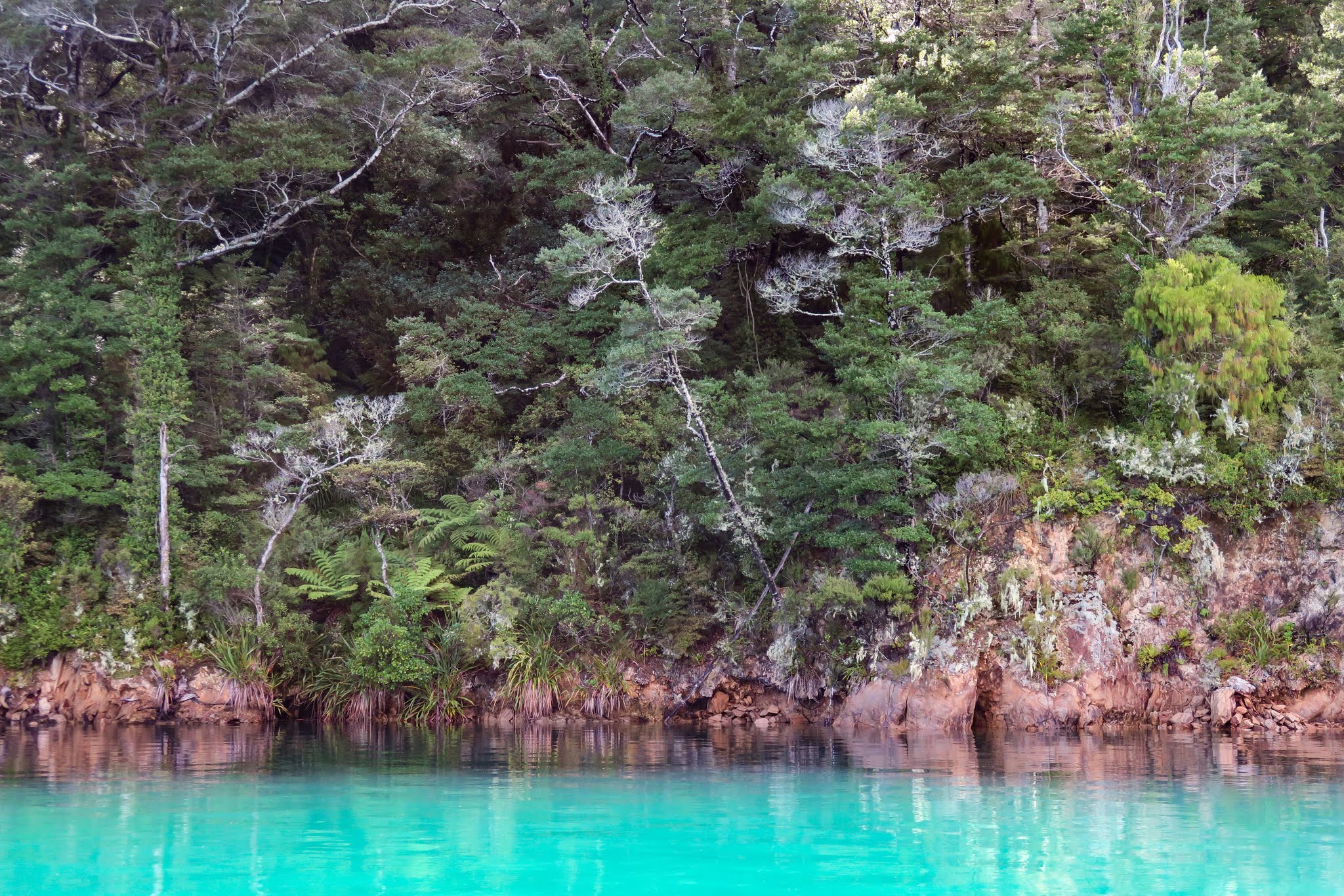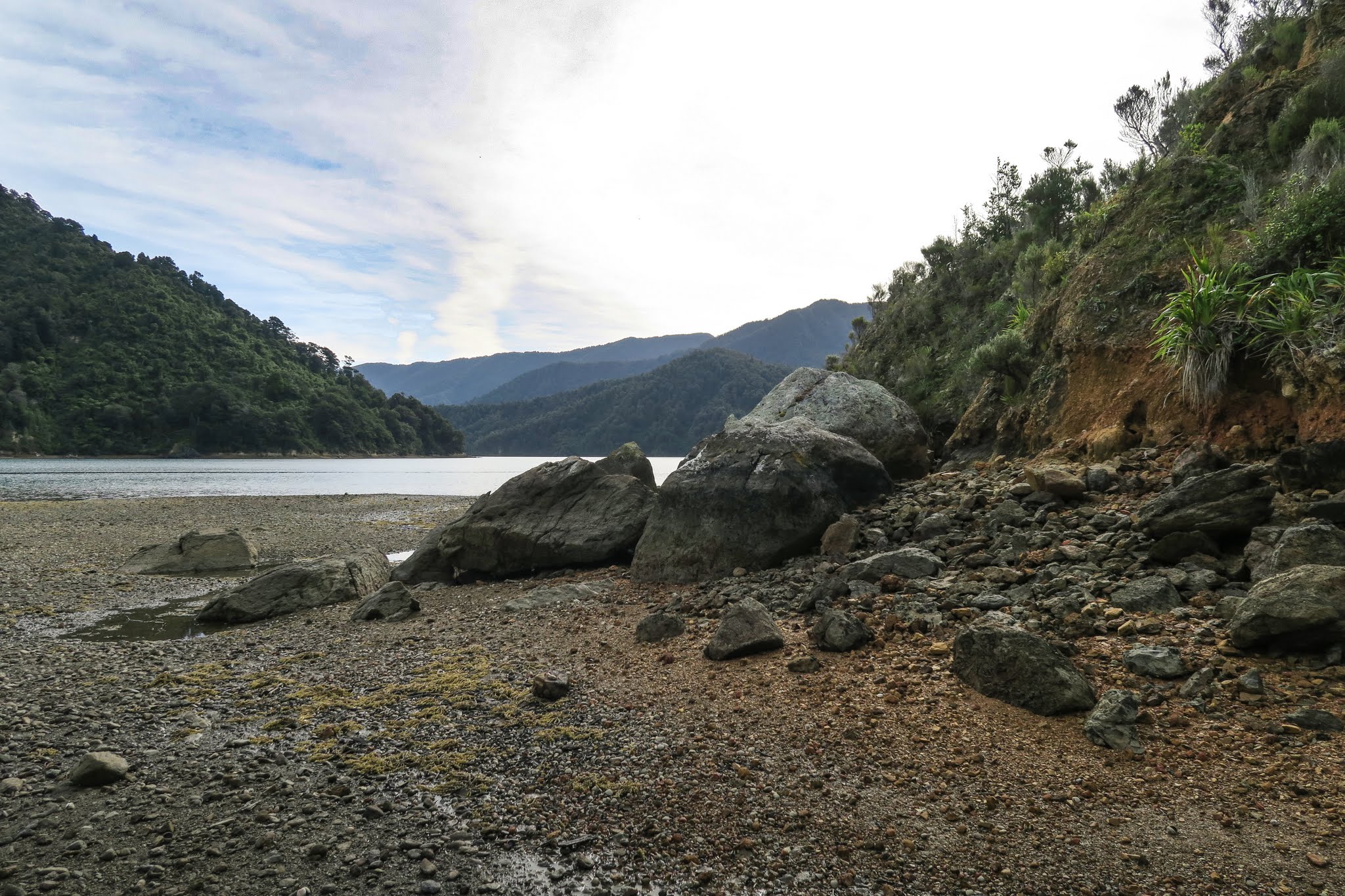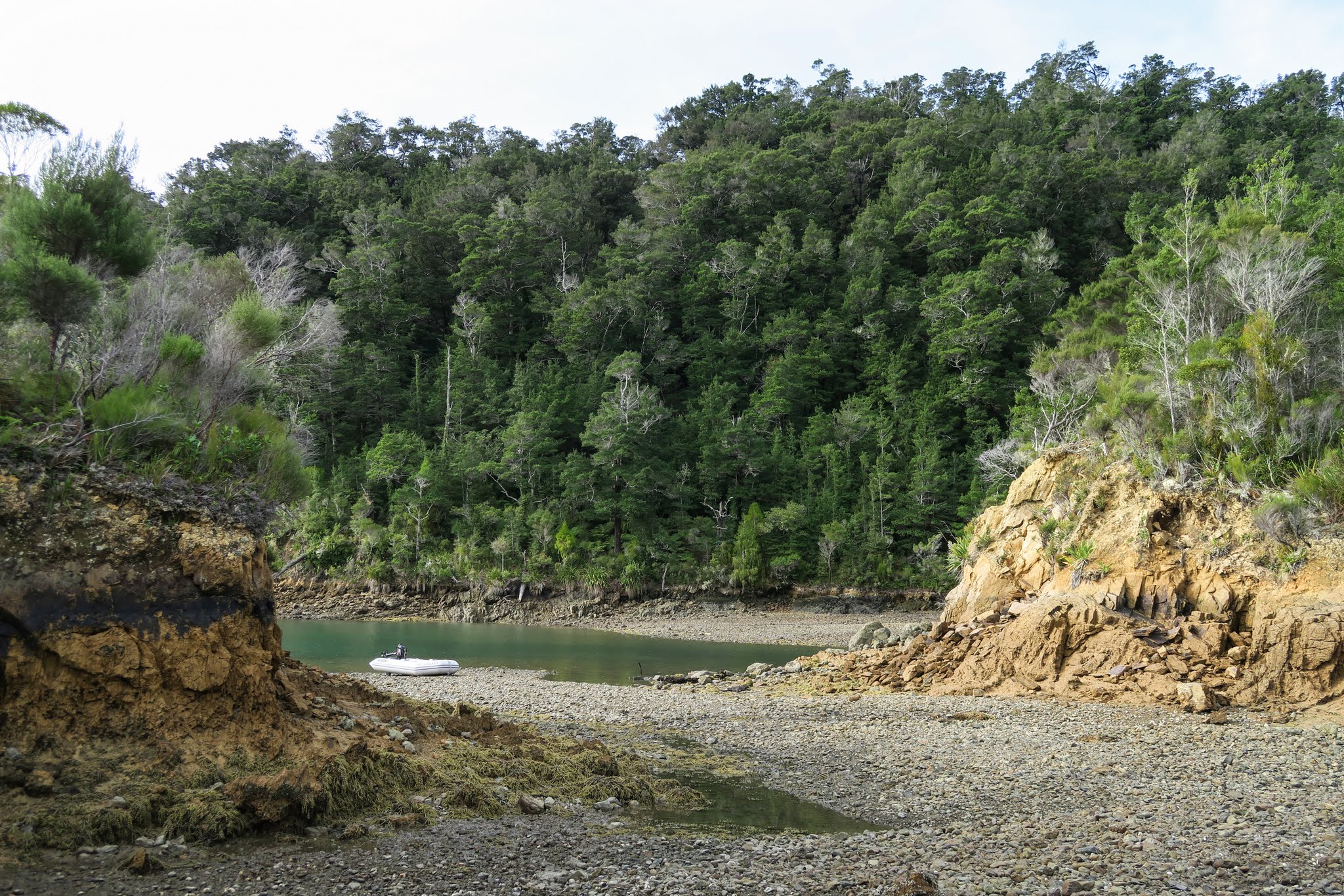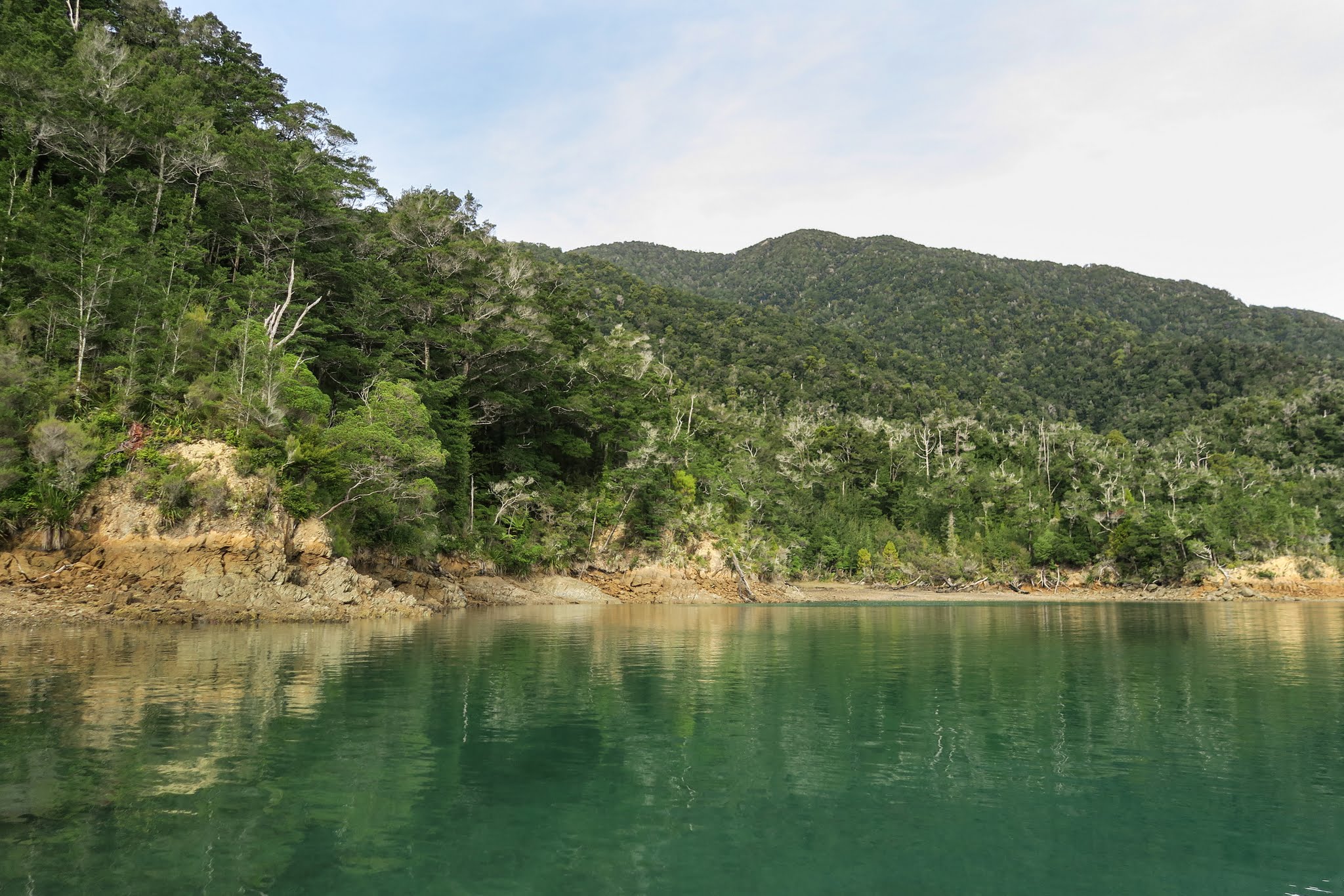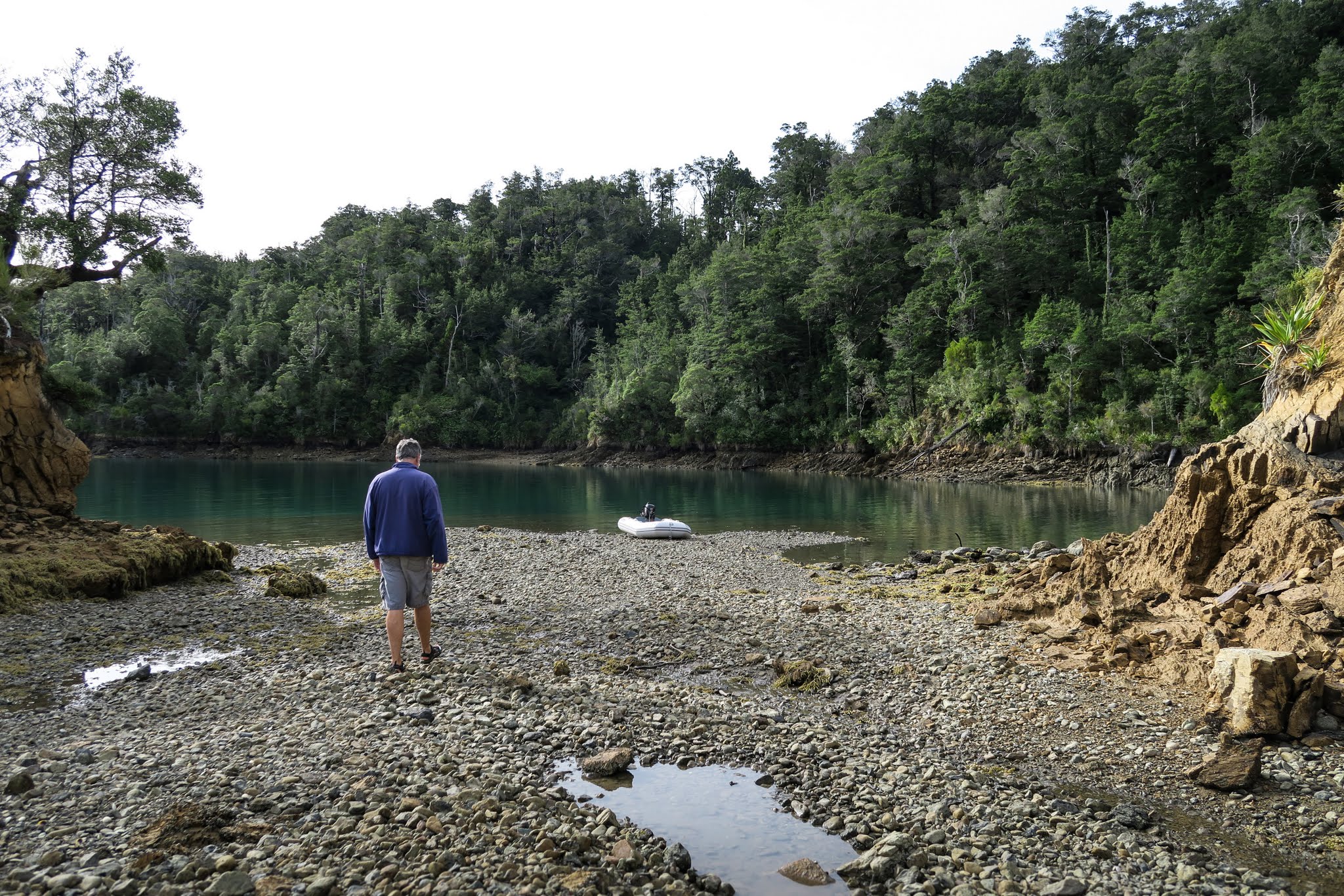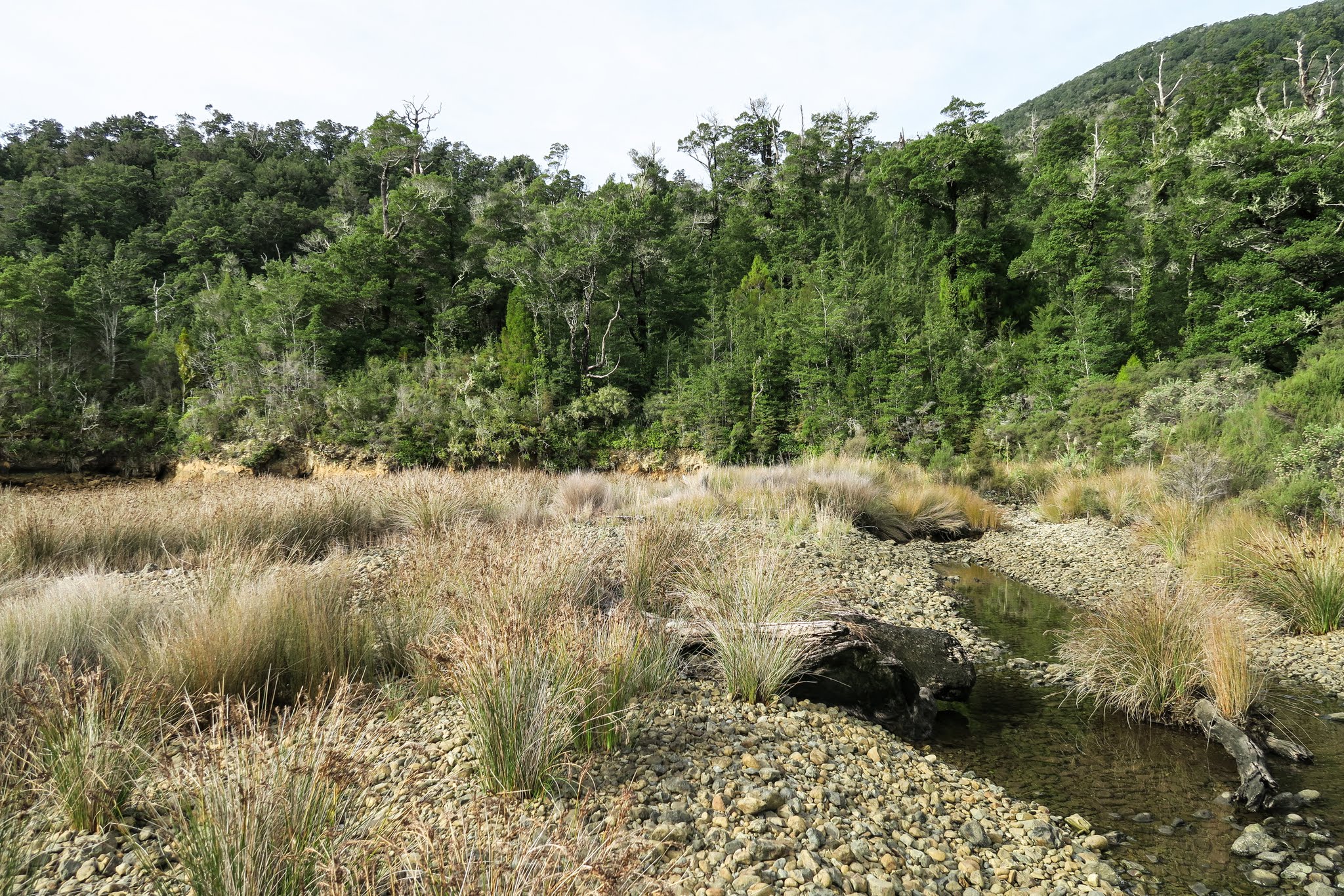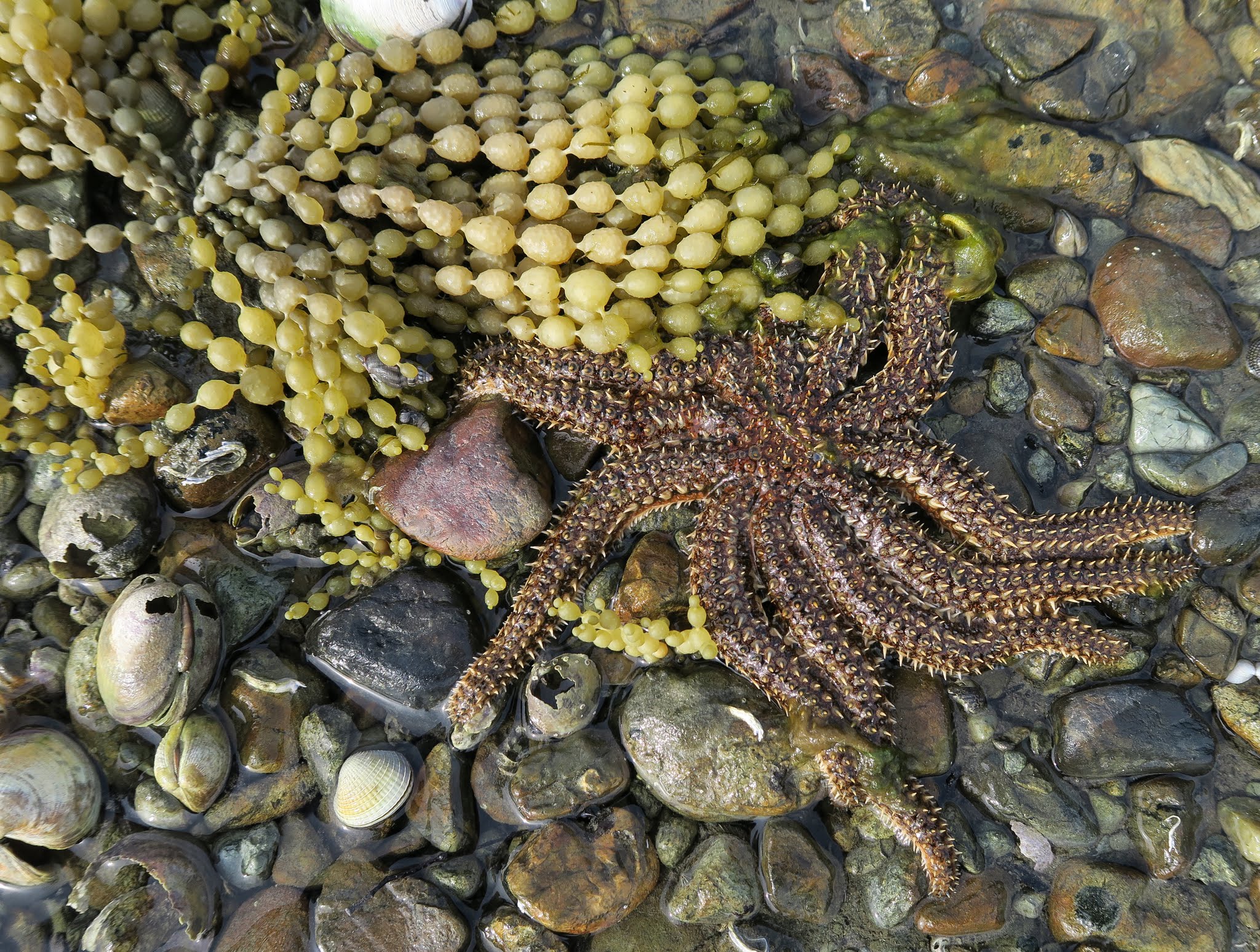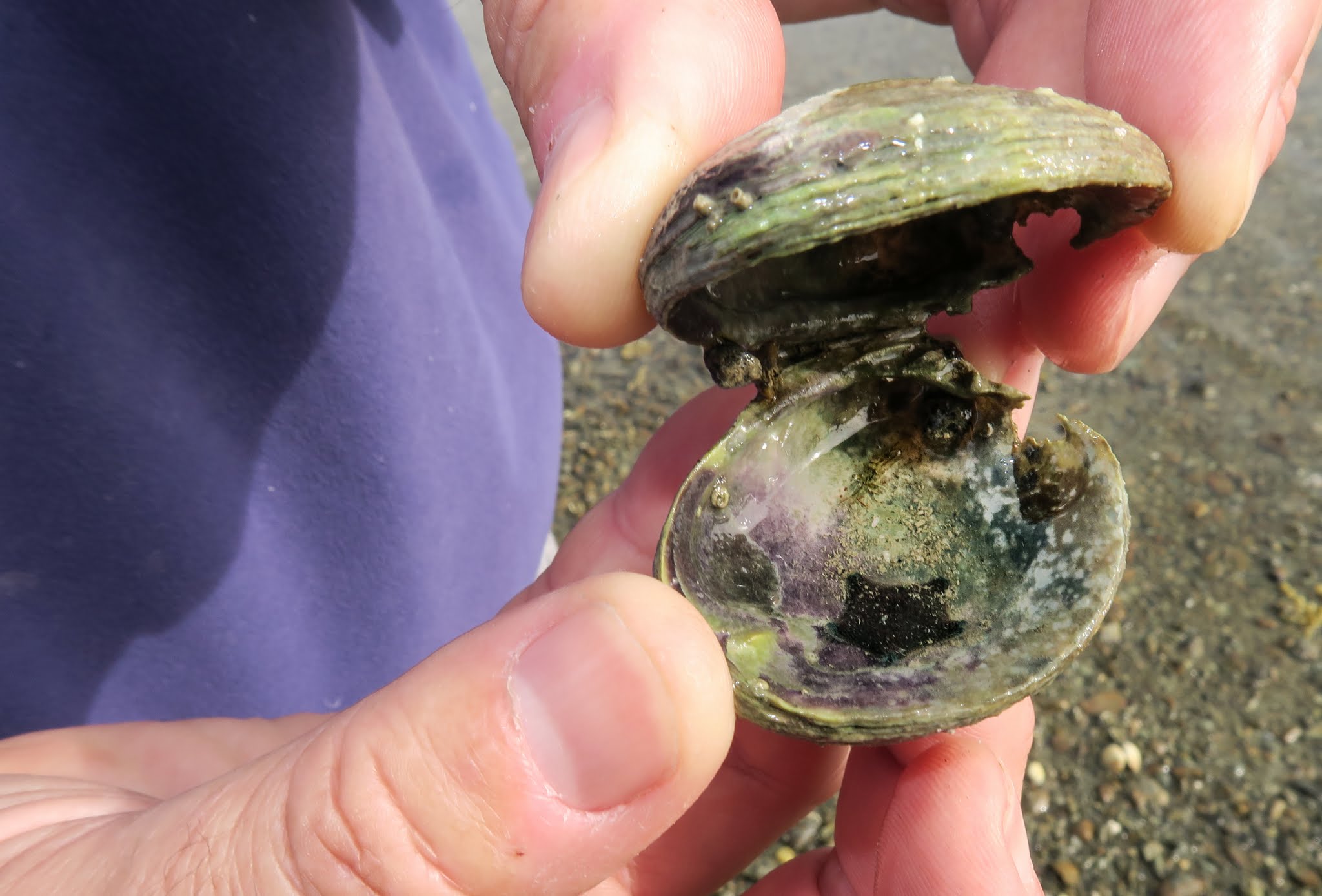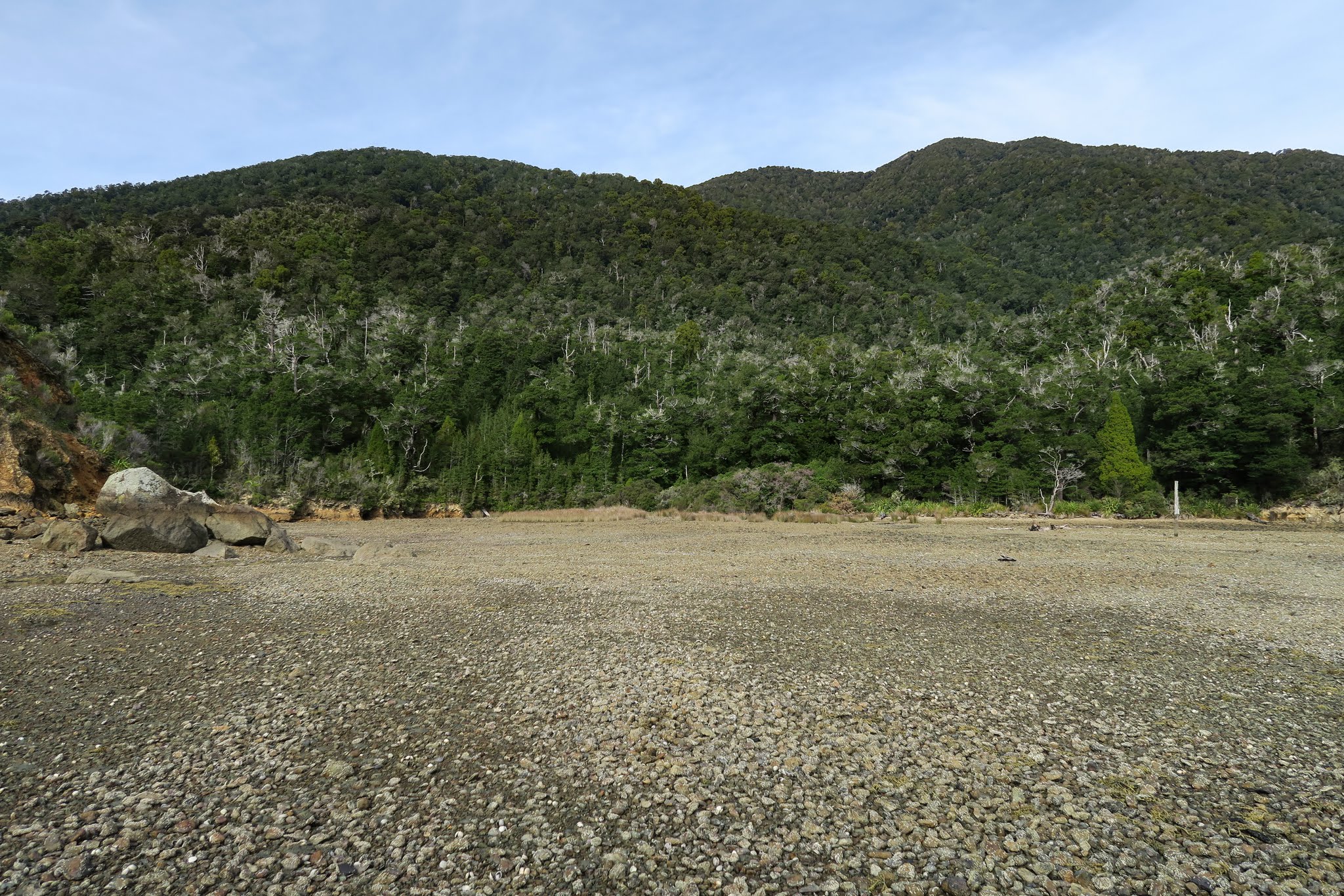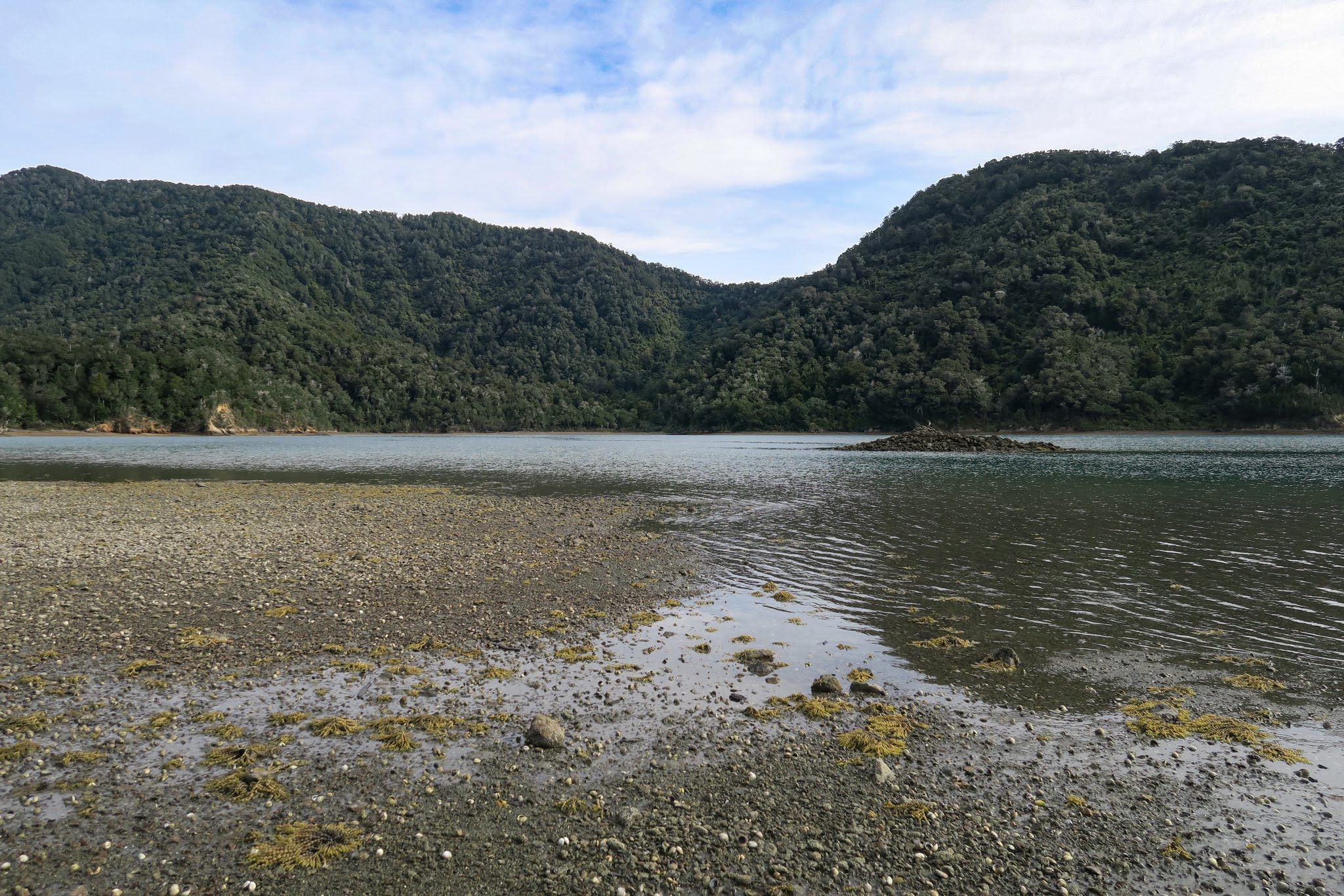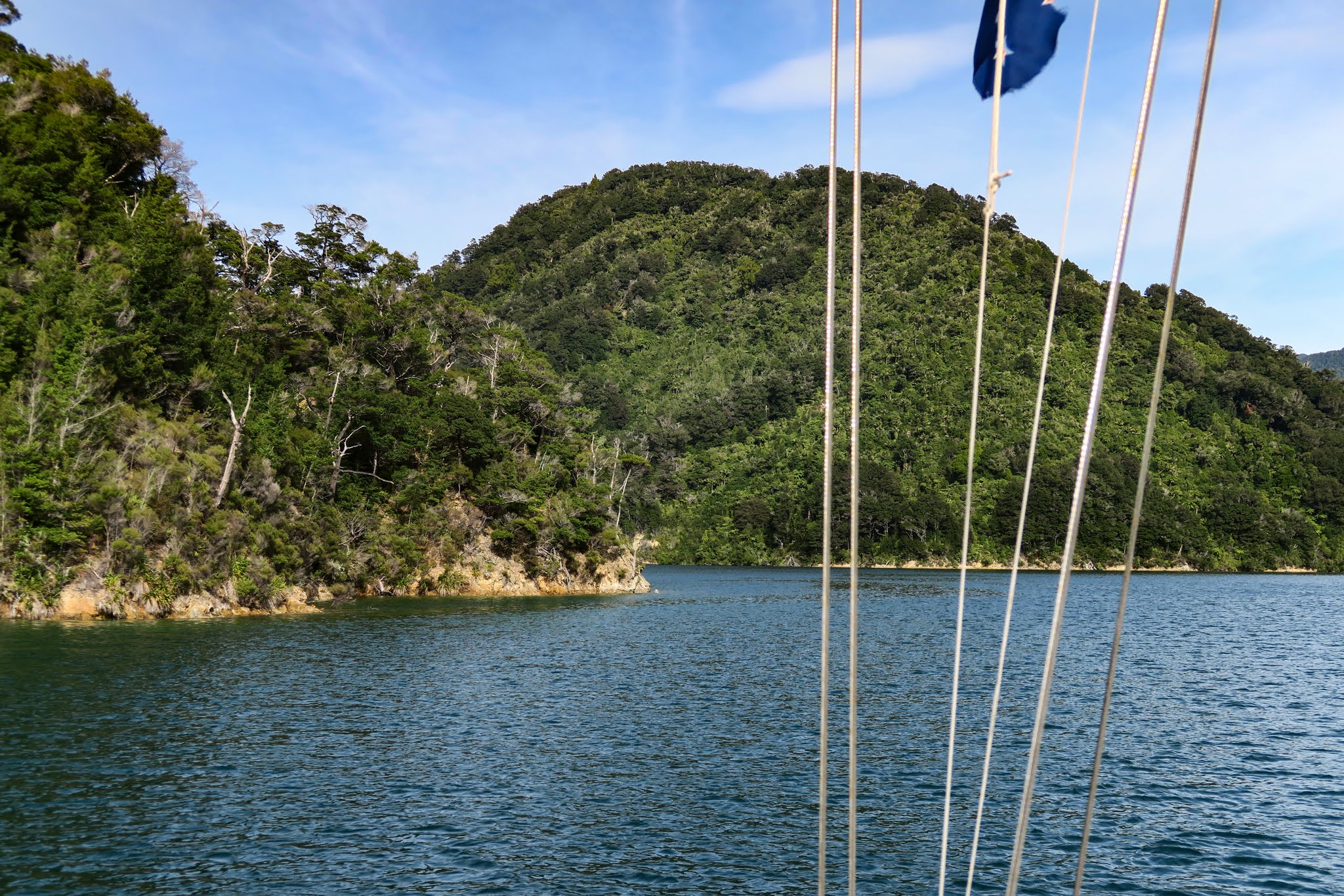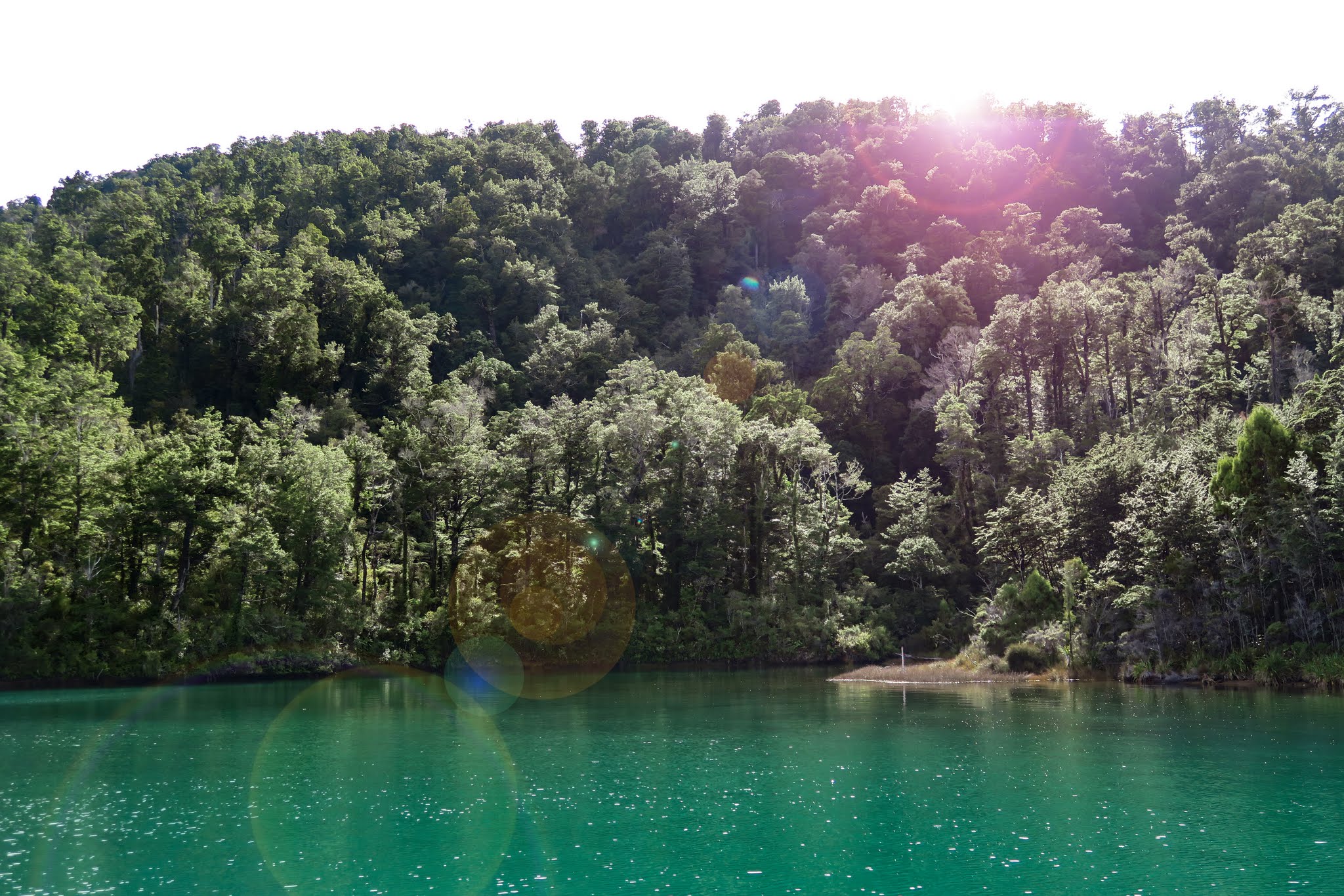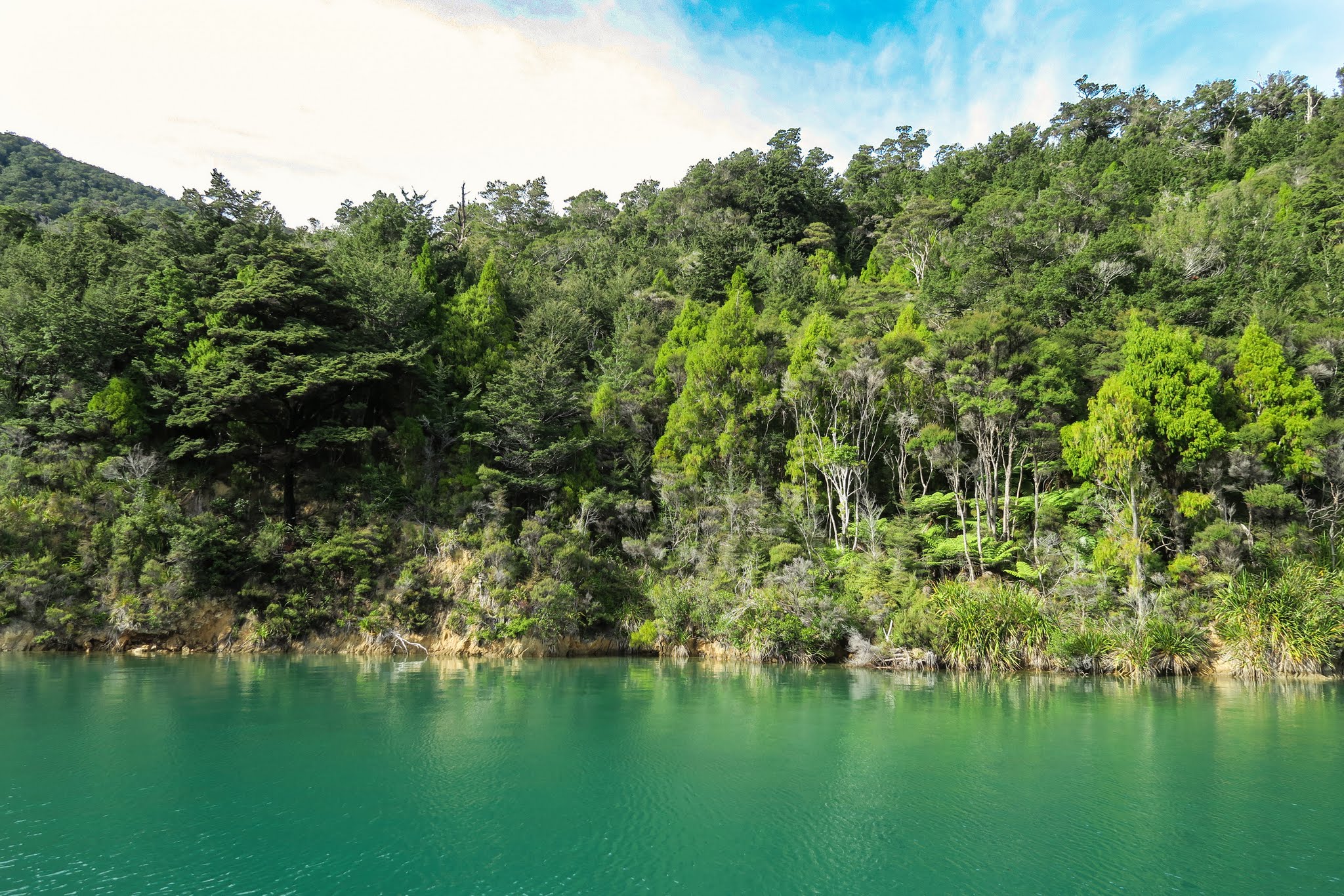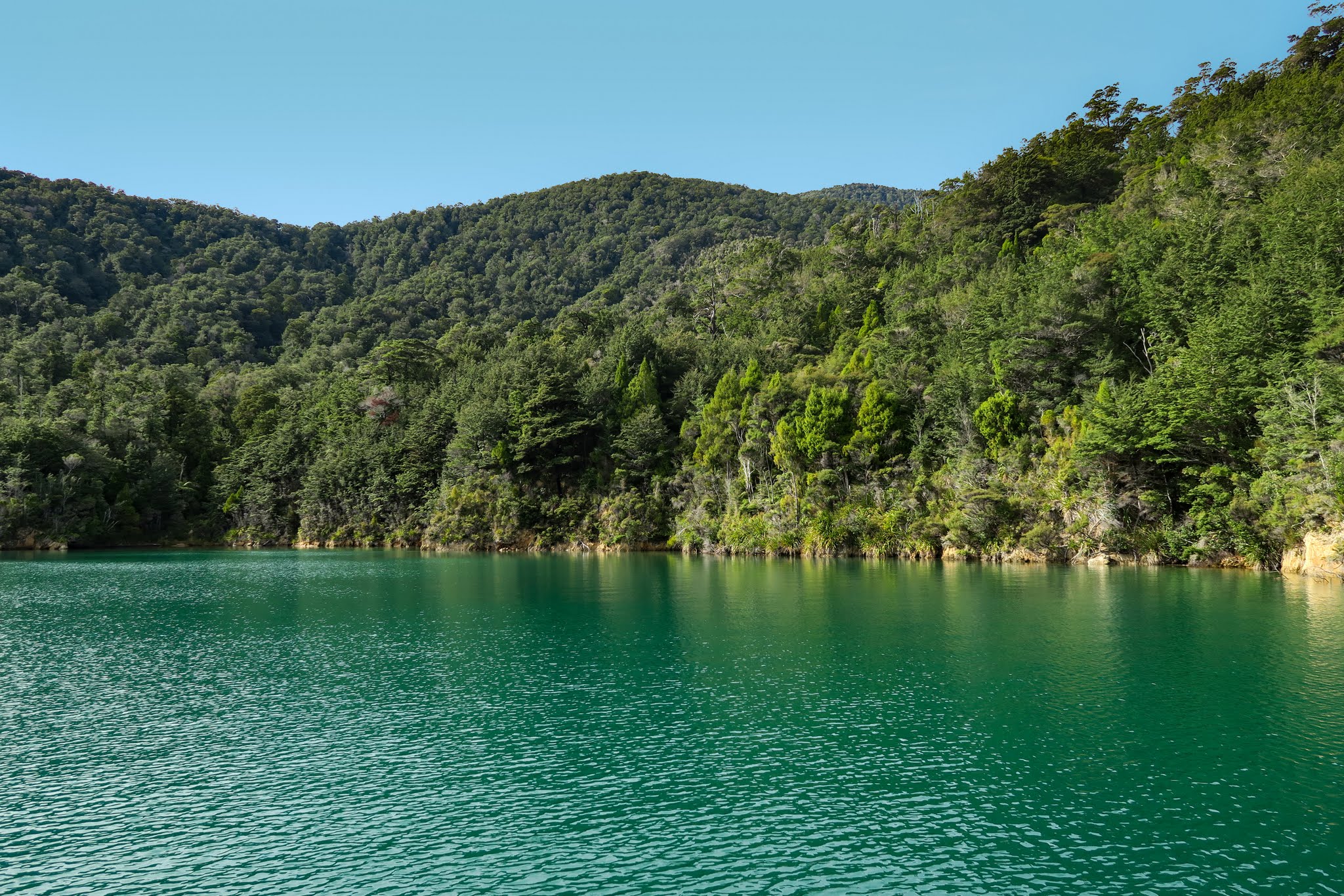April 9, 2016
We passed through the channel near Penzance and made our way through to the wider part of the Tennyson Inlet. I was interested in two anchorages, and yep, they looked really promising. So far we had three incentives to get back this way if time allowed. Below, a gallery of motoring through the outer Tennyson Inlet (click to enlarge/scroll).
In the middle of Tennyson Inlet were three small islands, the outer of which had an anchorage that hadn’t made my list of possibilities. As we passed that final island, I was intently studying areas on the mainland shore. Rich mentioned offhandedly the island over there looked pretty. I turned to look and caught a glimpse of an absolutely gorgeous-looking anchorage just before it disappeared behind its headland.
“Oh my God, what was that?” I went on to ask Rich, without hesitation, “Why don’t we go anchor in there?!” On just a glimpse of the place, I was ready to toss out our plans to cover some miles today. Rich said it’s difficult to anchor: there’s a big rock in the middle and we’d need a stern line. Plus we really did need to get to get to Kenepuru before the next round of winds, but he did kindly offer to take me back so I could see it. With that, he turned around and we went back to get a closer look at the island of Tawhitinui. –Cyndi
[Note from Rich: Not “kindly” so much as I knew that while Cyndi wouldn’t say anything, she’d have that hurt little girl look if we passed it by. I try so hard to avoid that look! It’s even worse than the “Wow you didn’t just do that?!” look.]
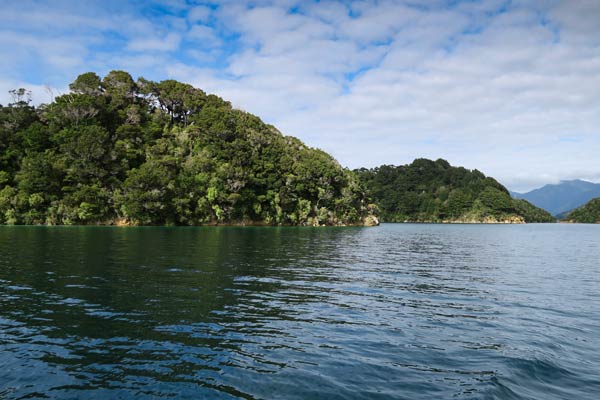
Looking back at the outer headlands surrounding Tawhitinui Island’s bay. (Tennyson Inlet, Pelorus Sound, New Zealand)
